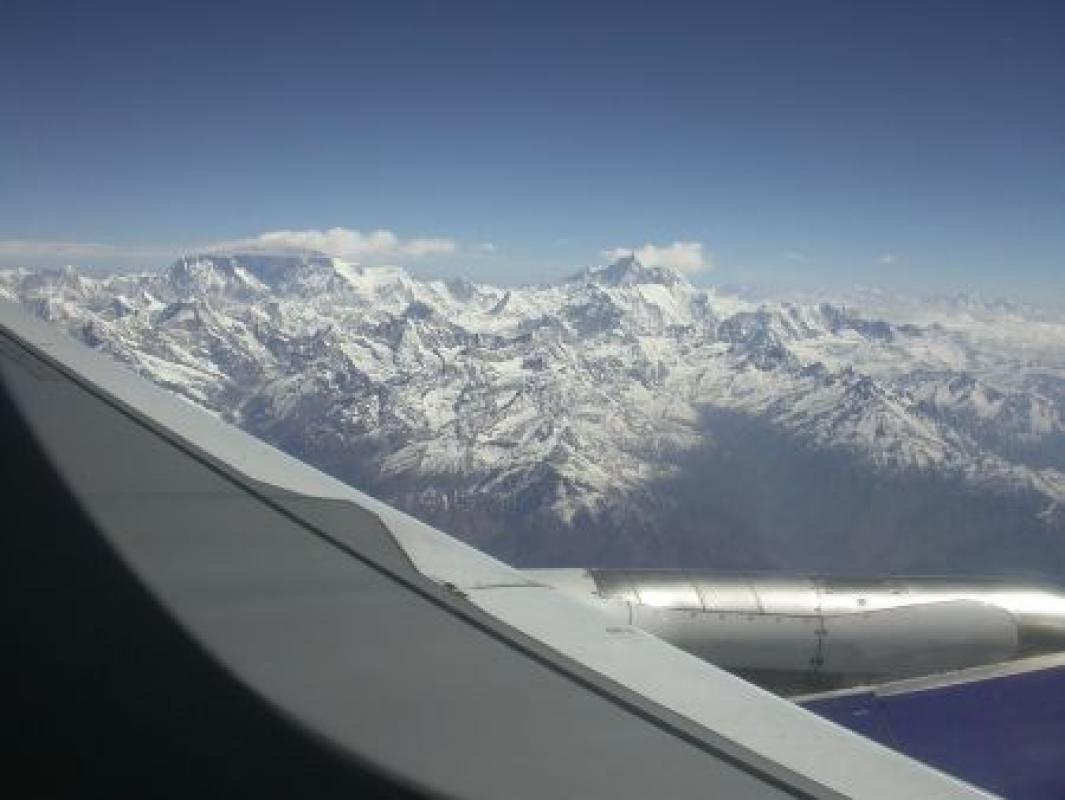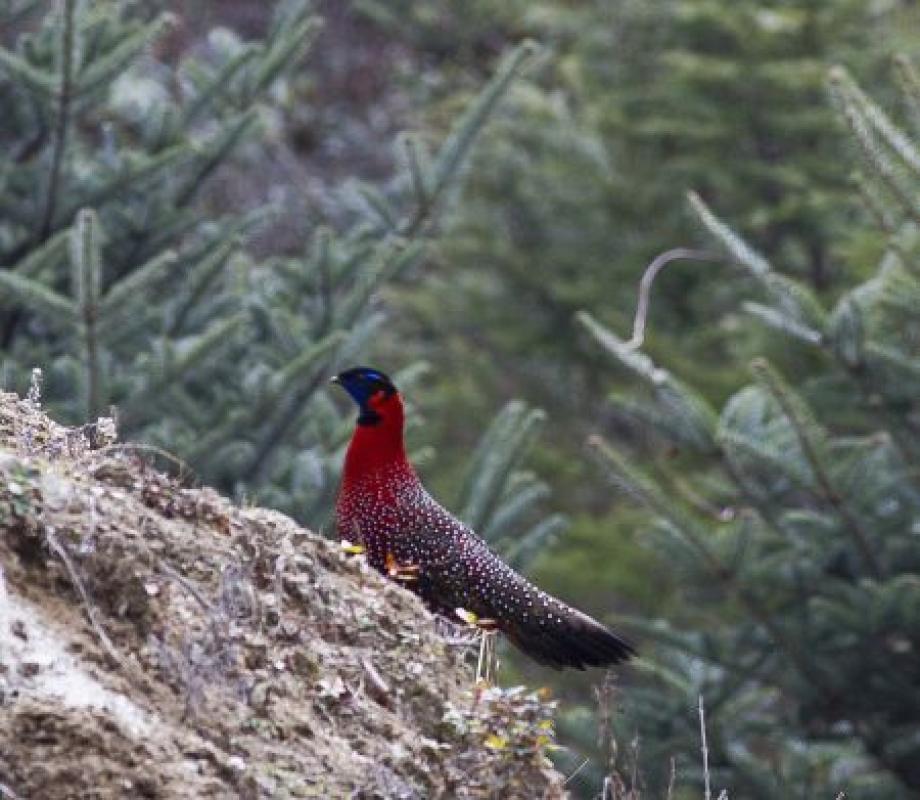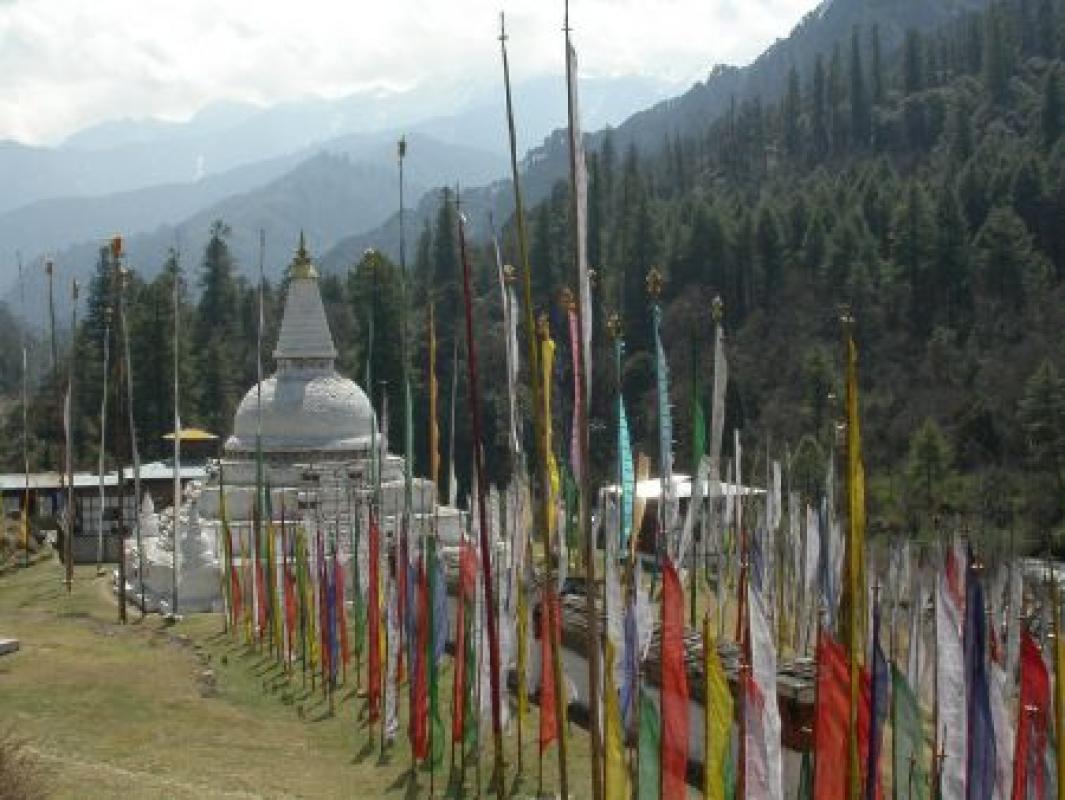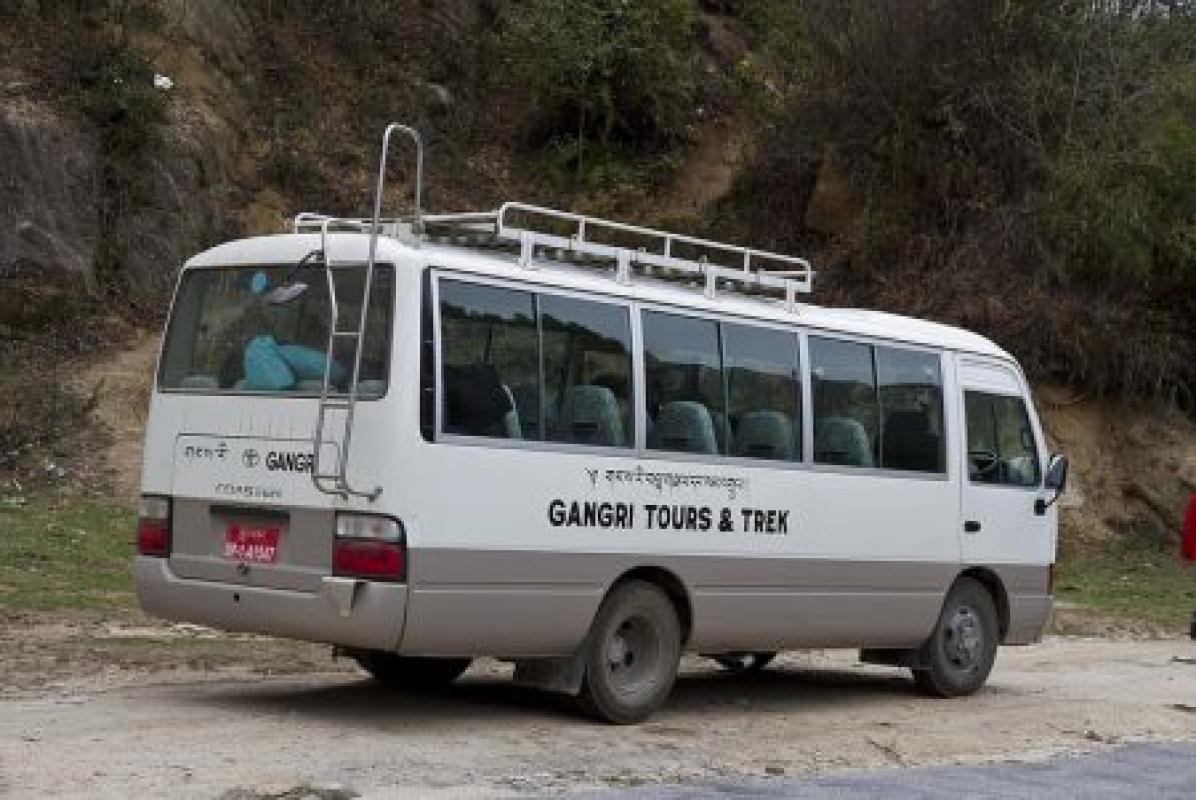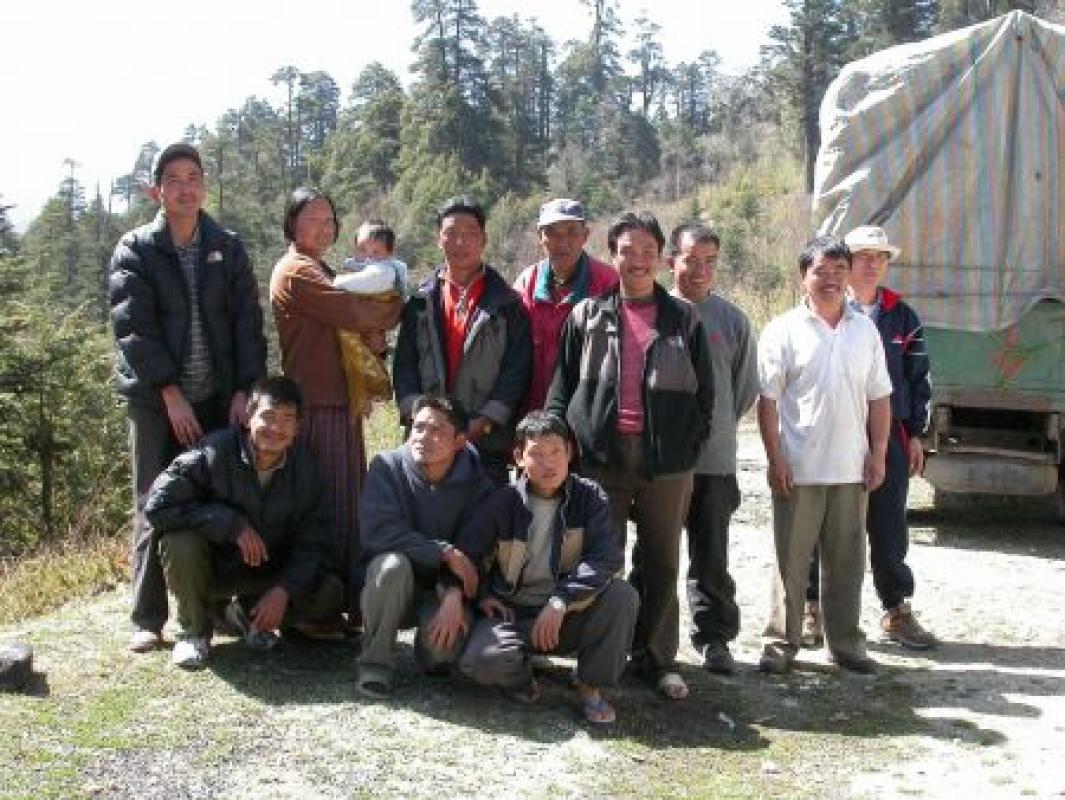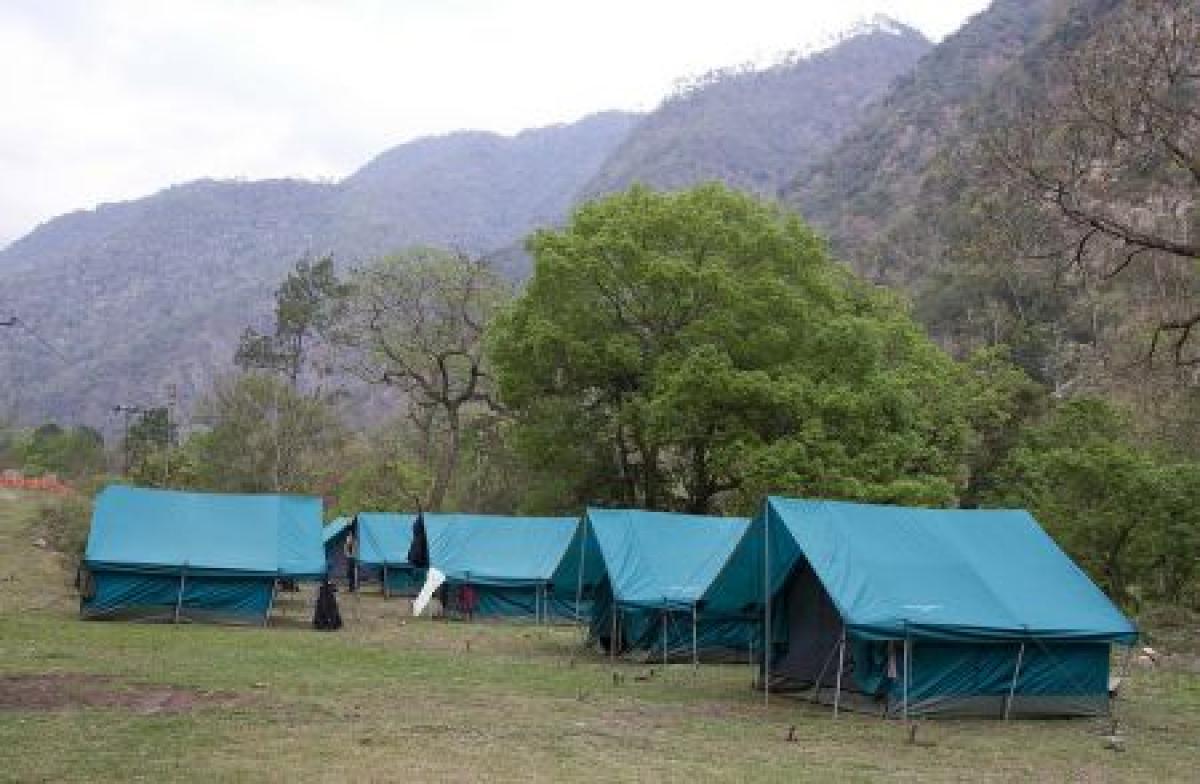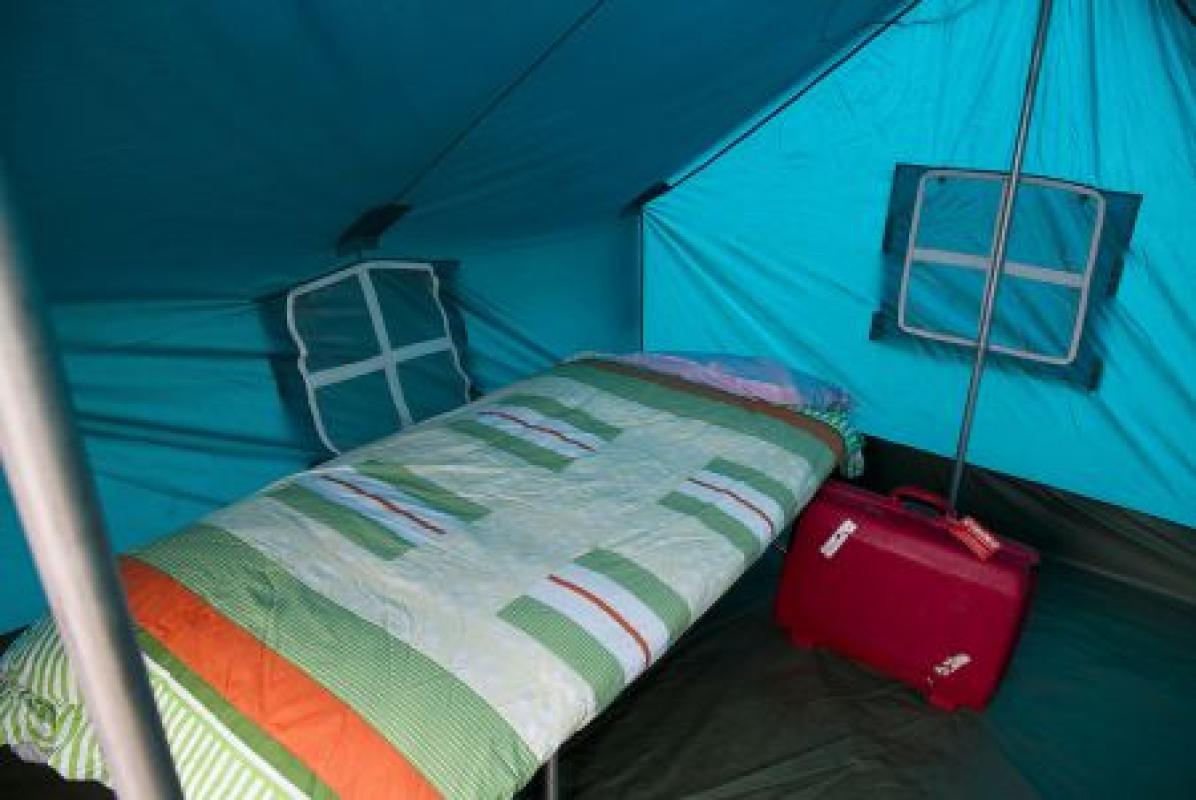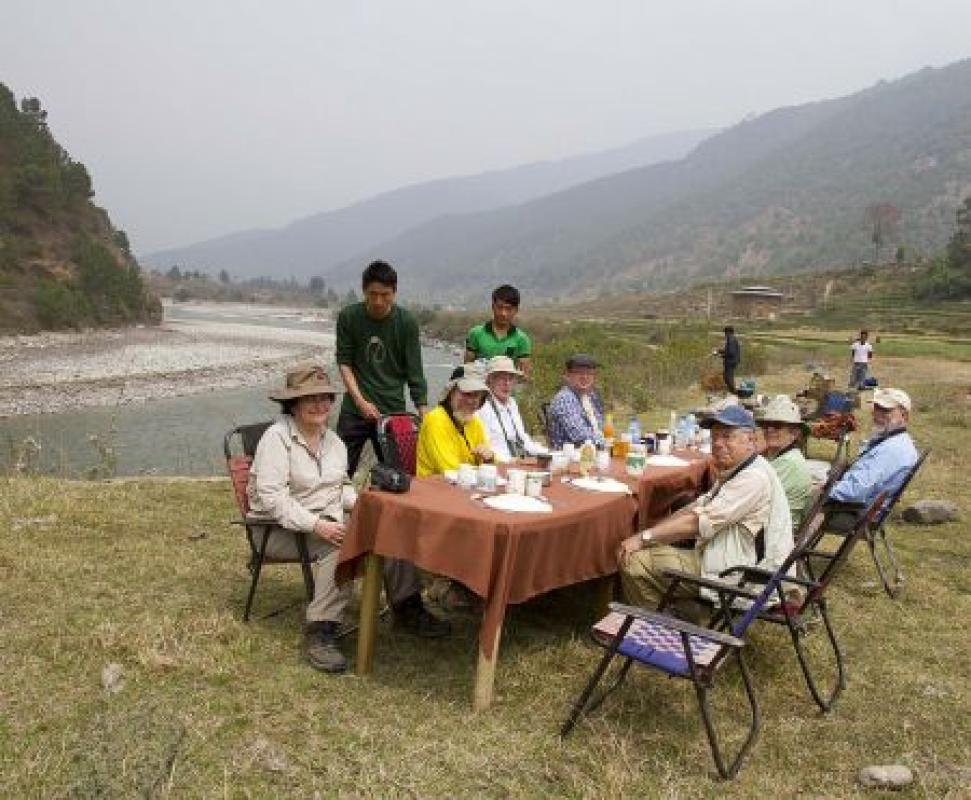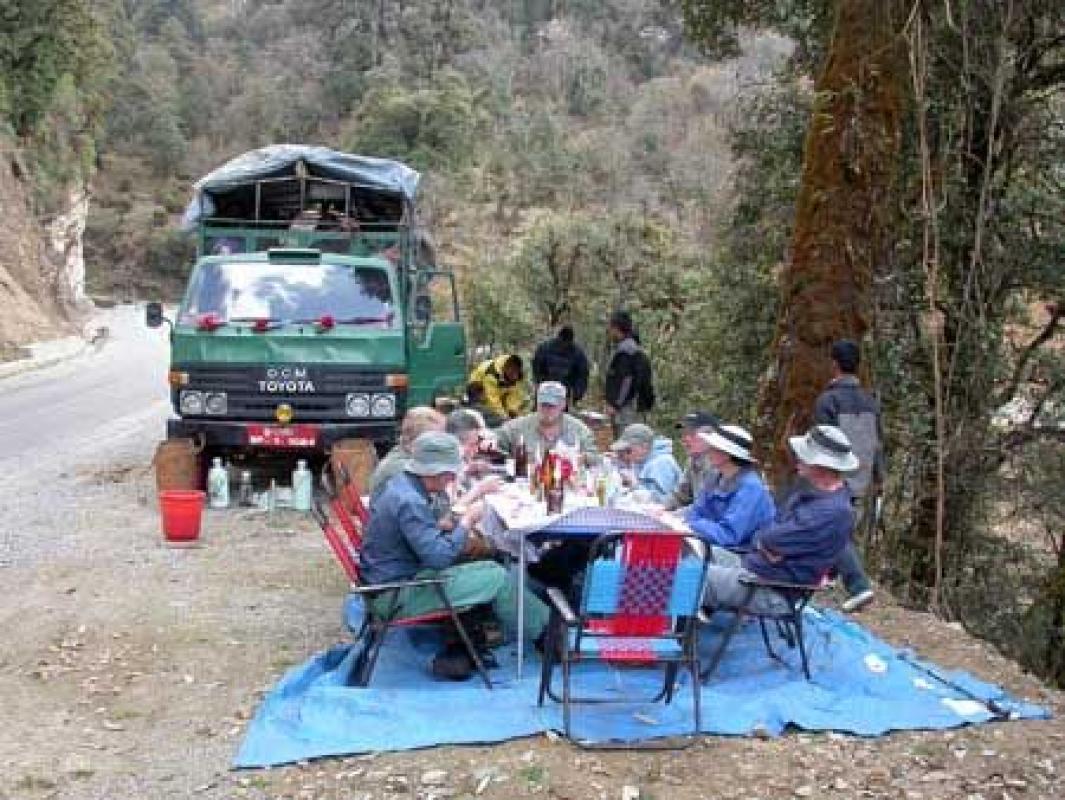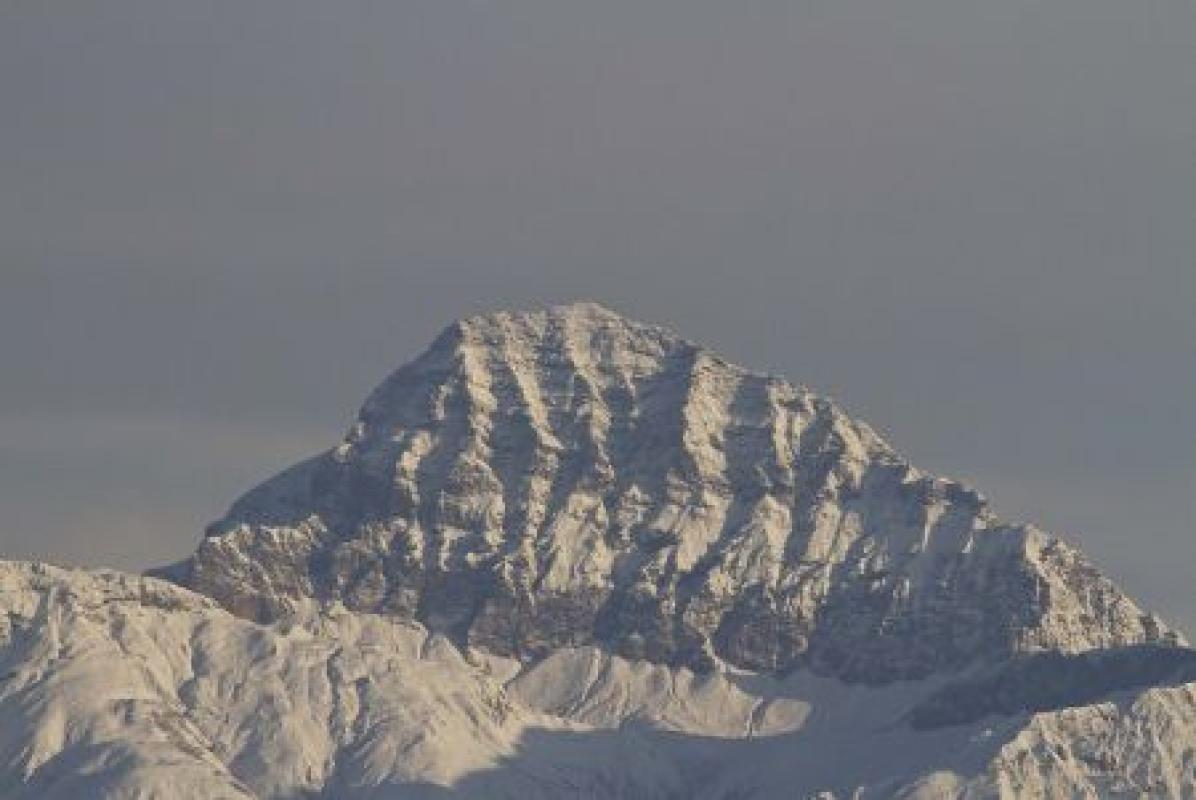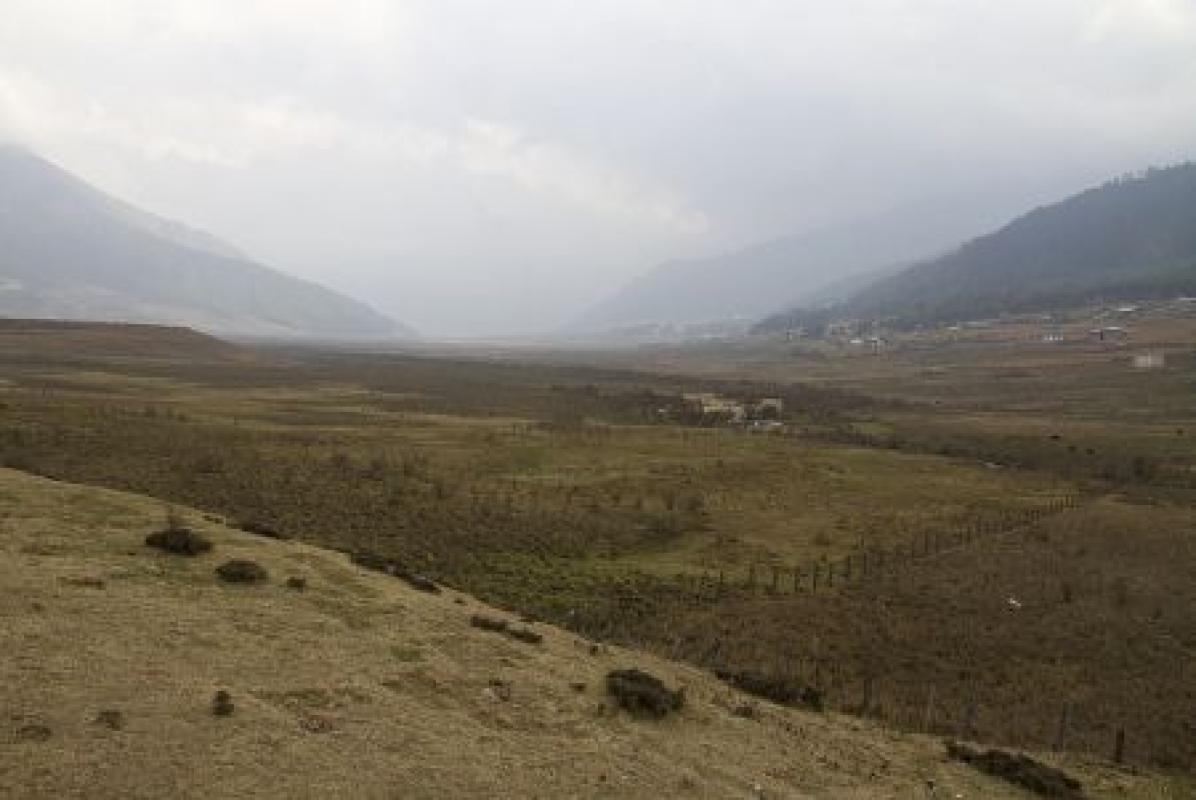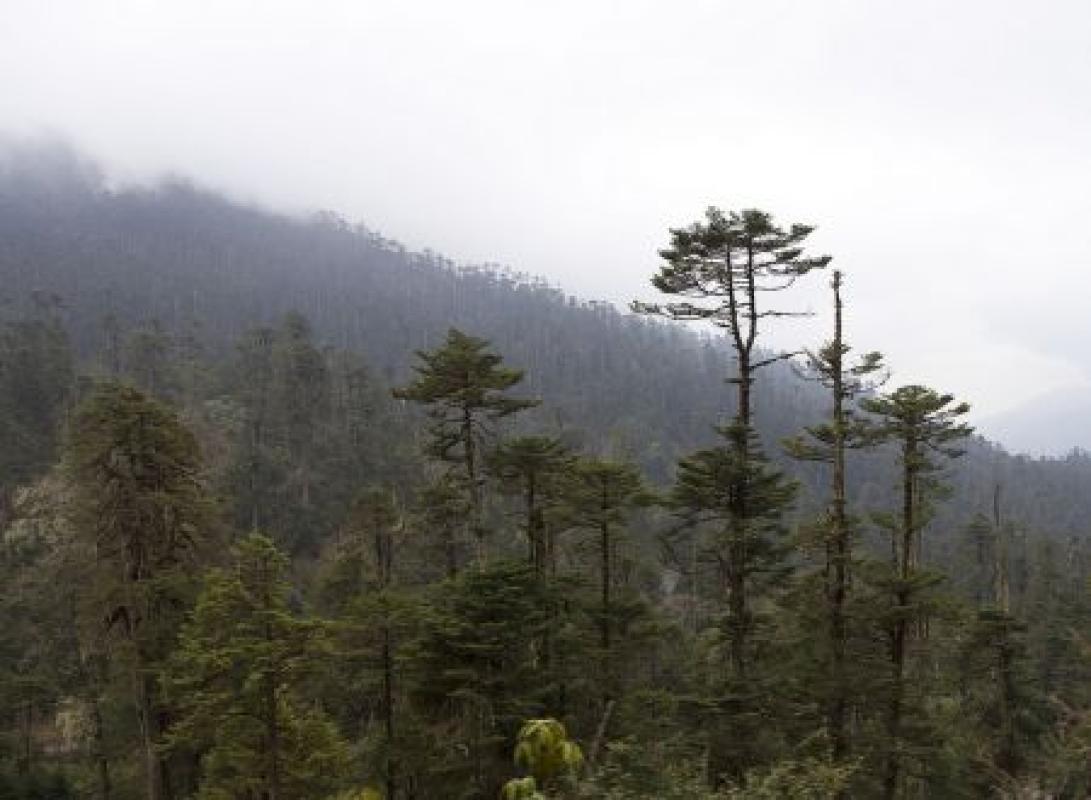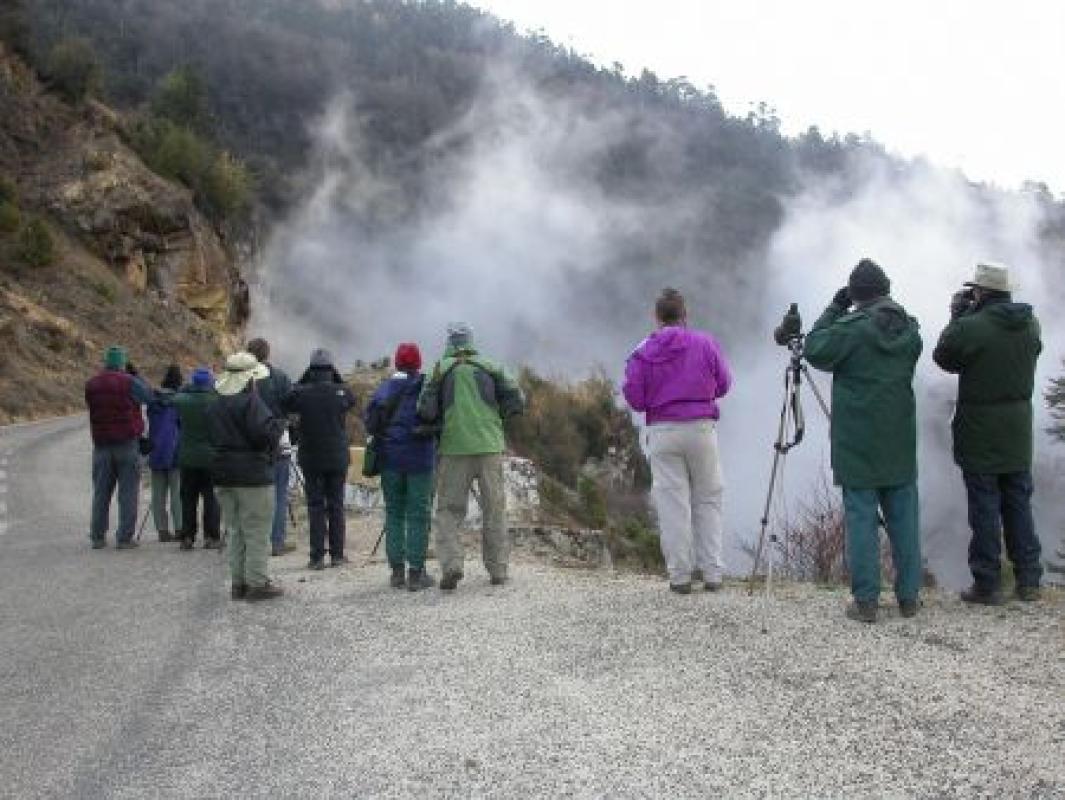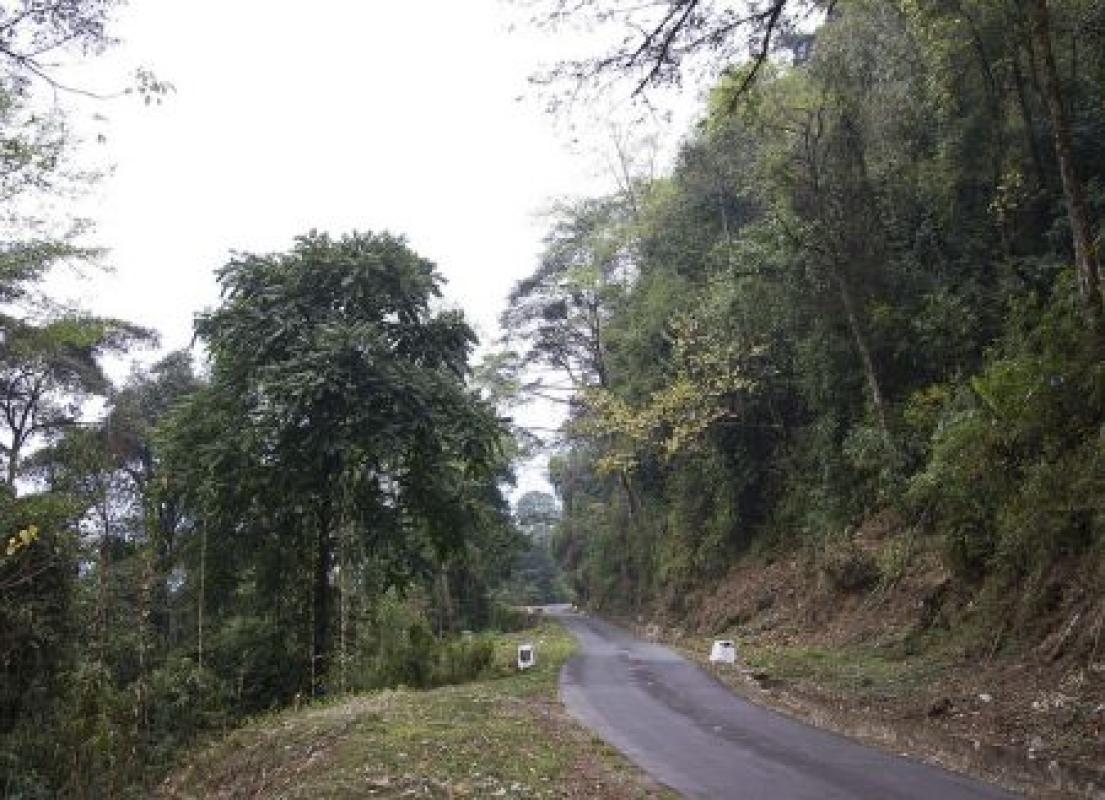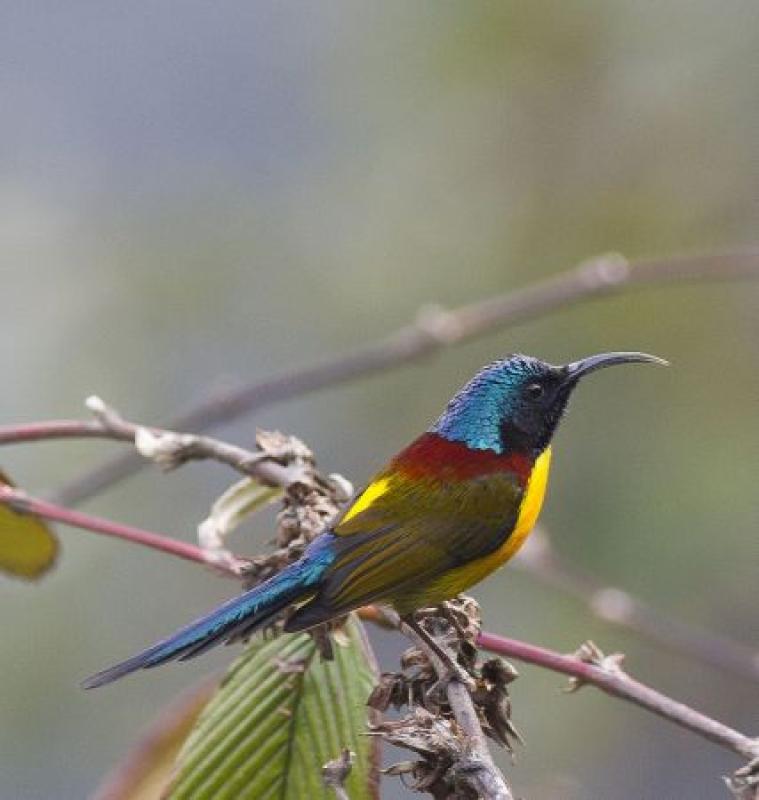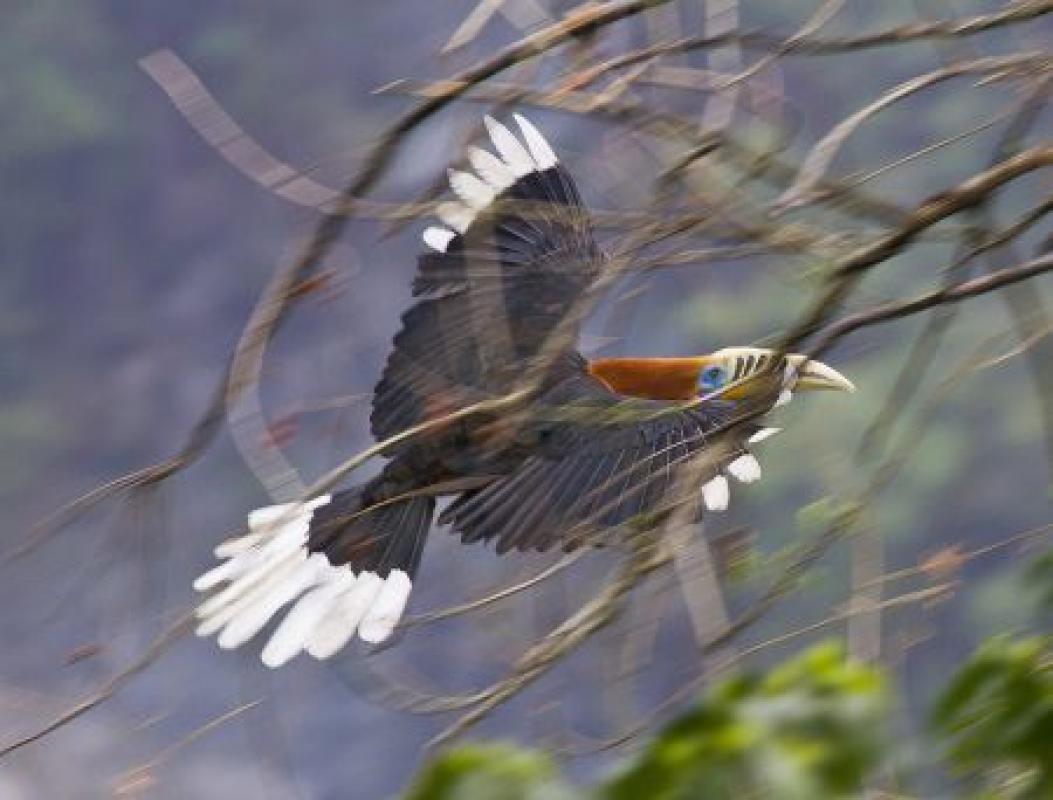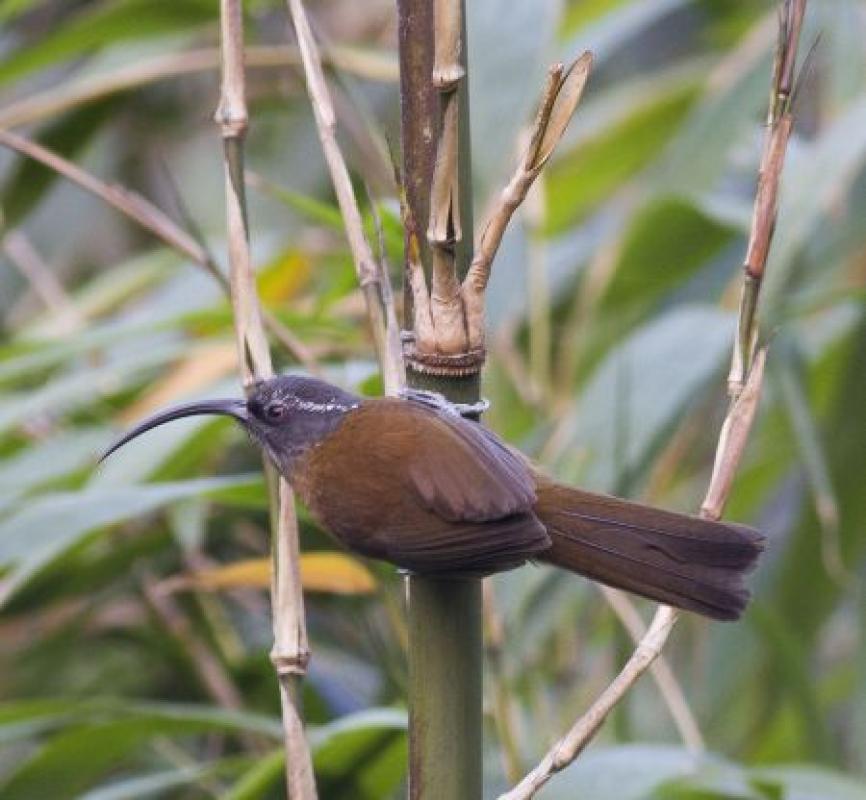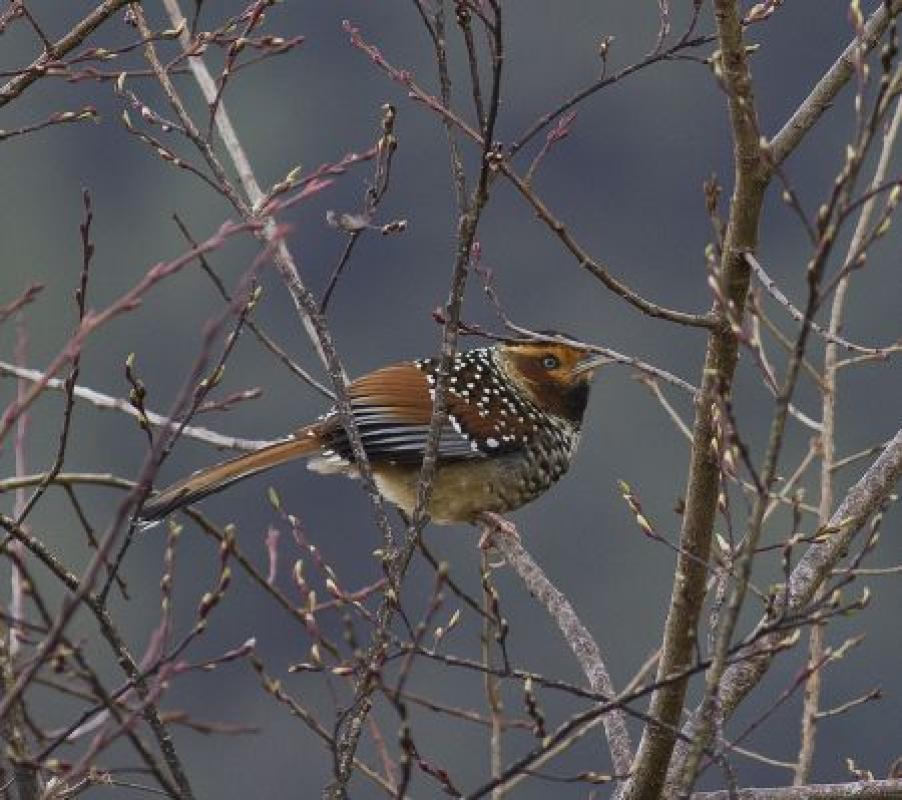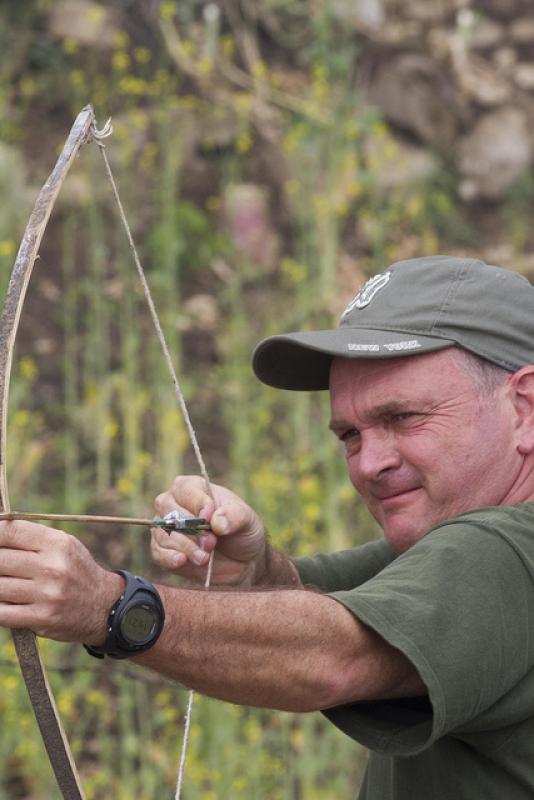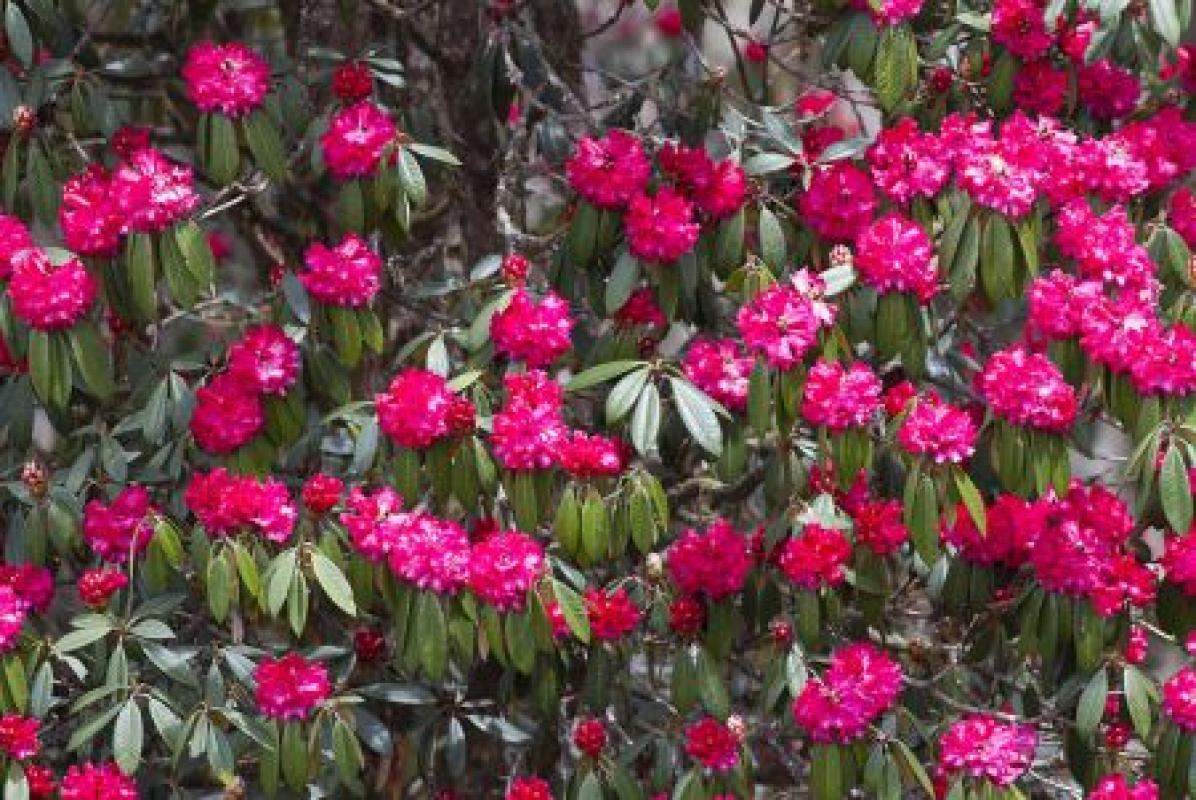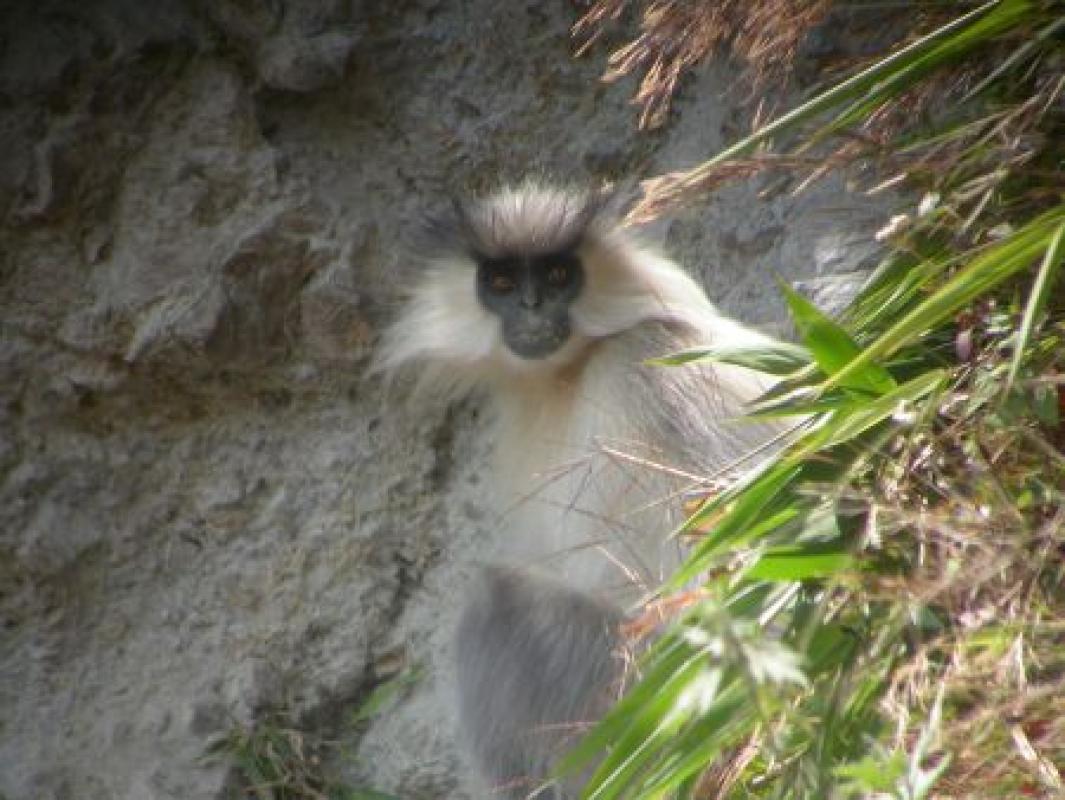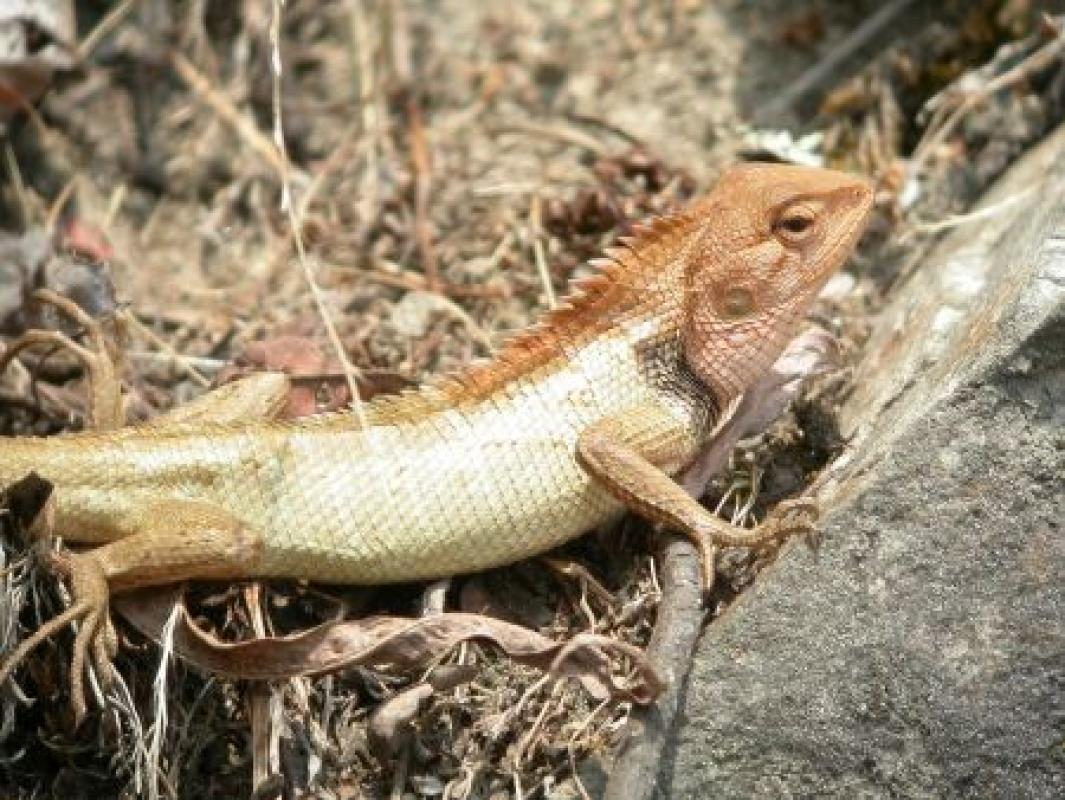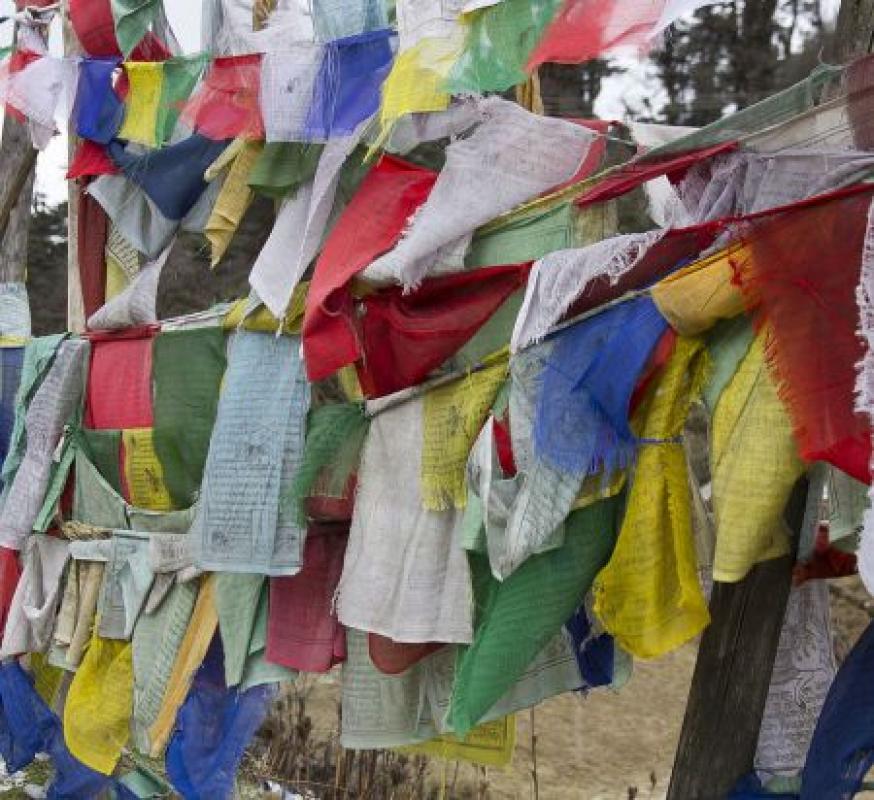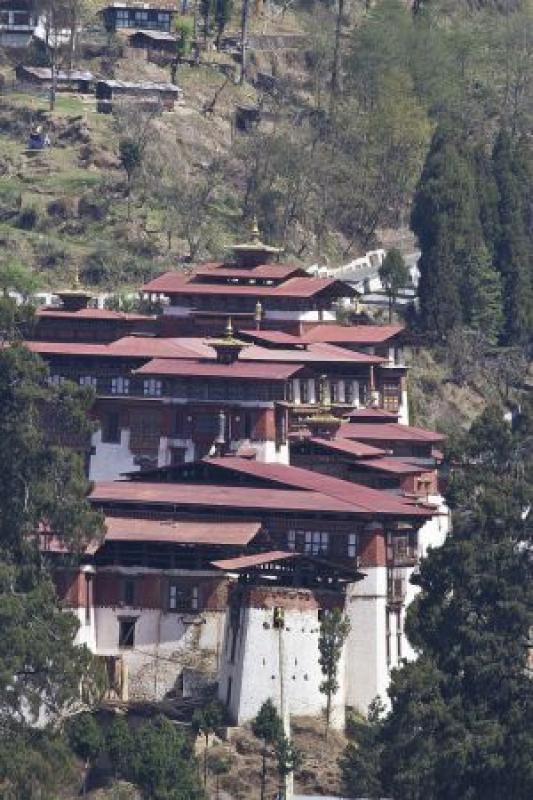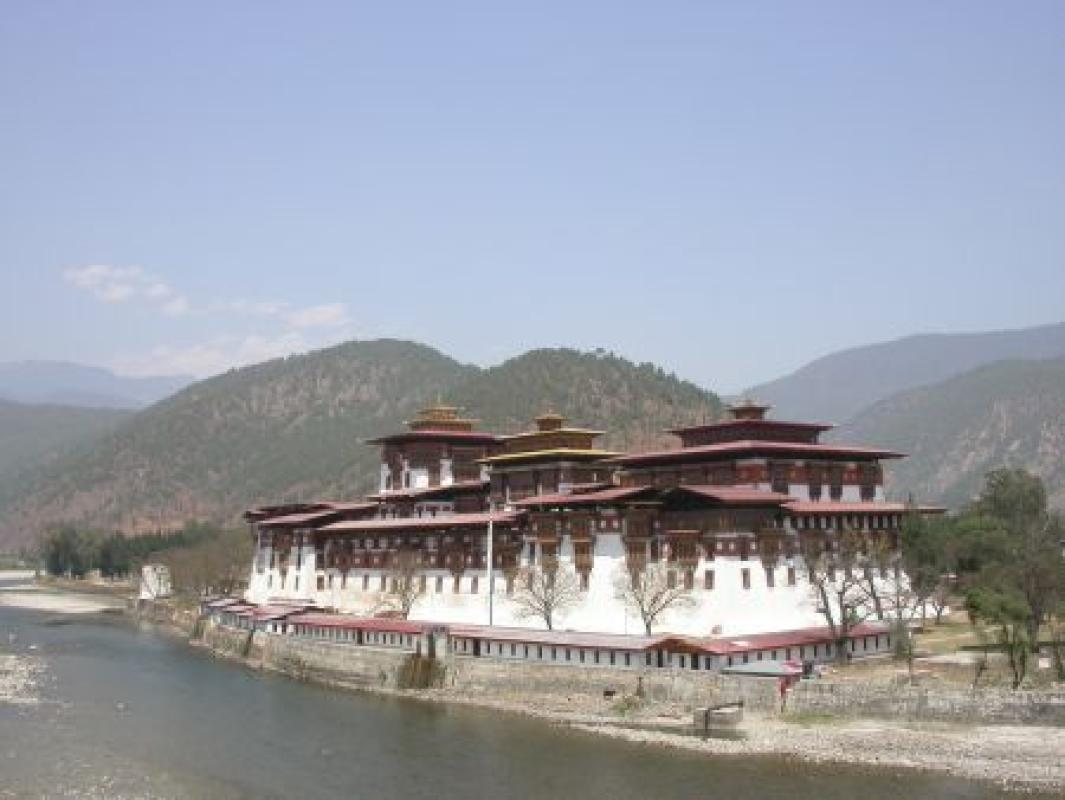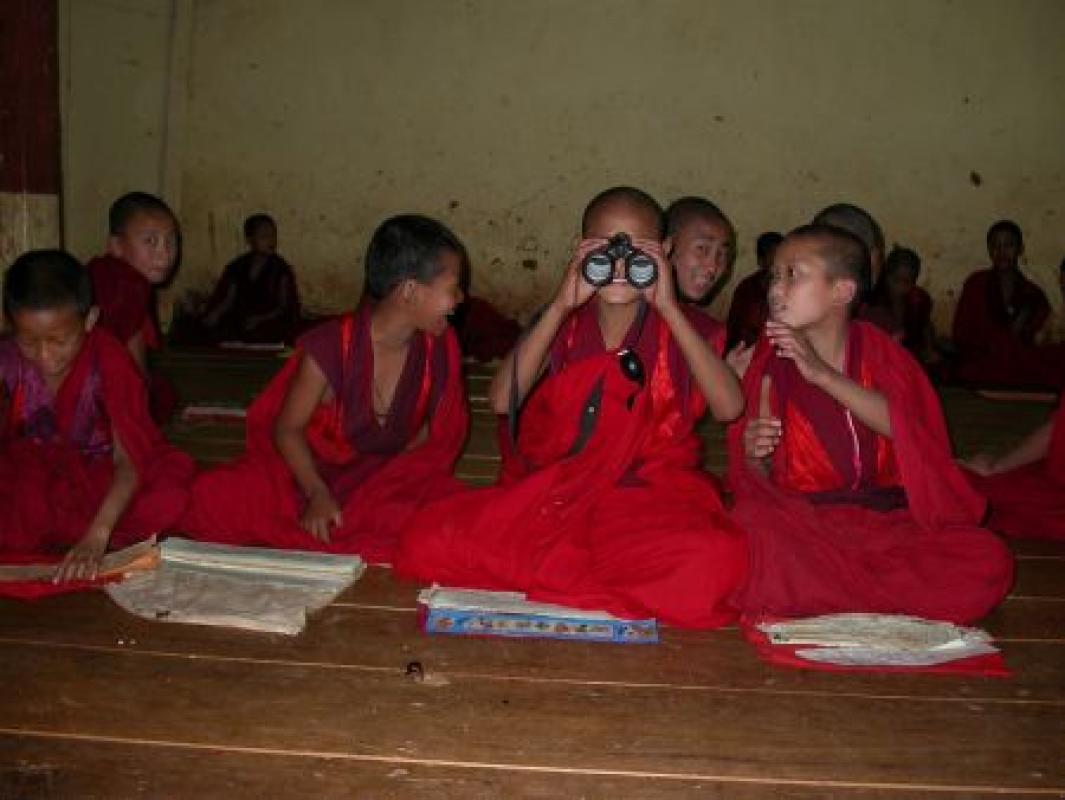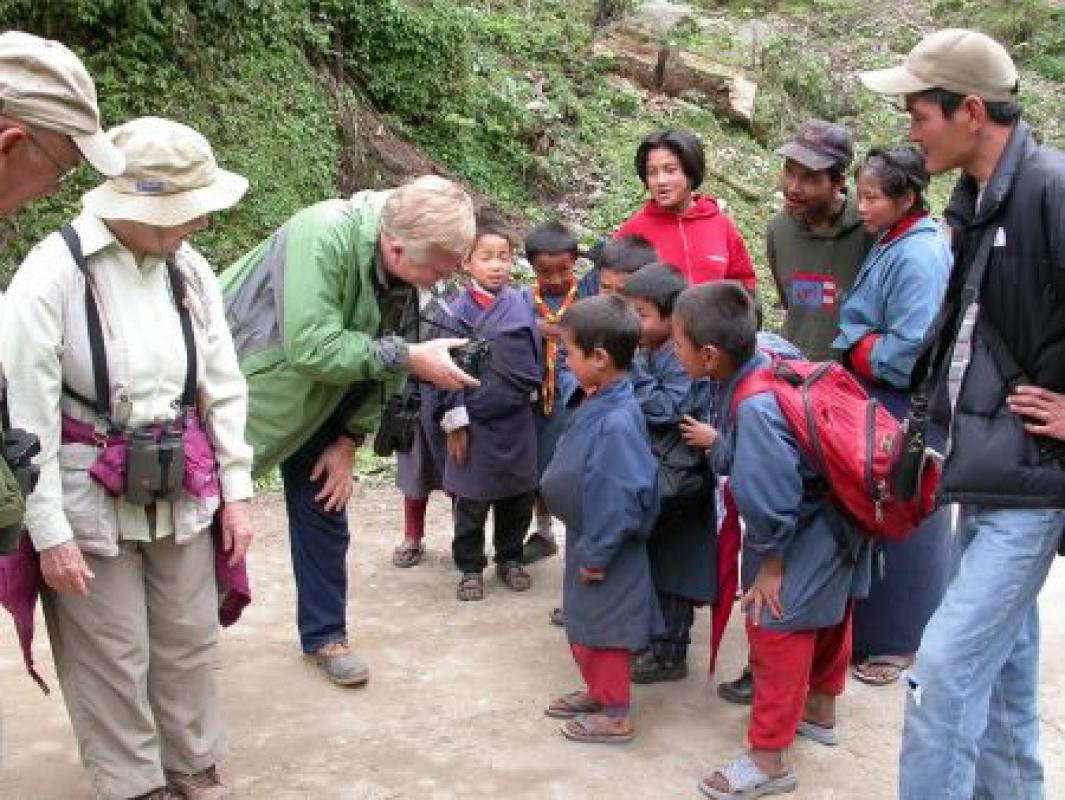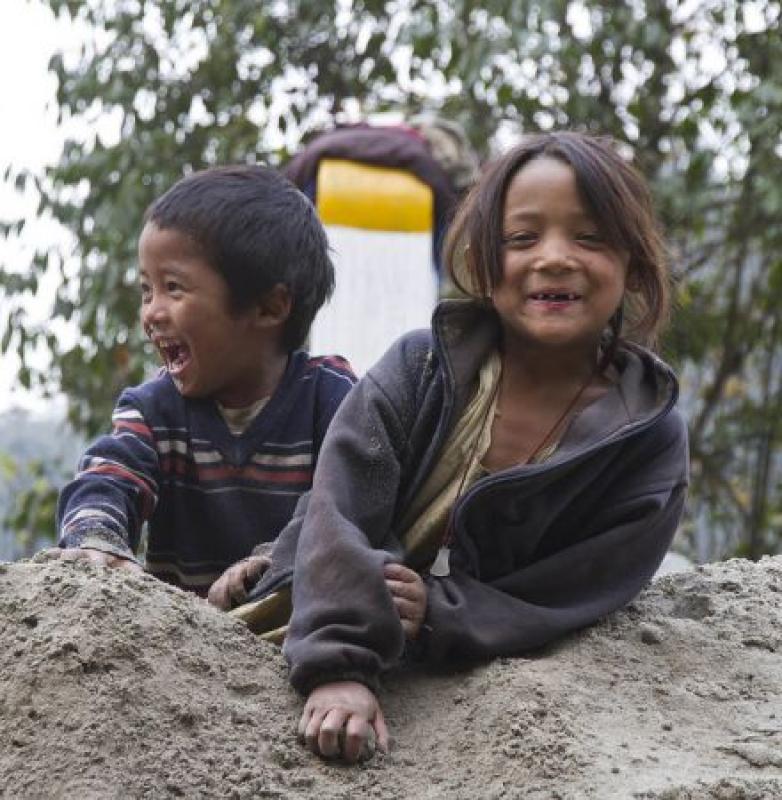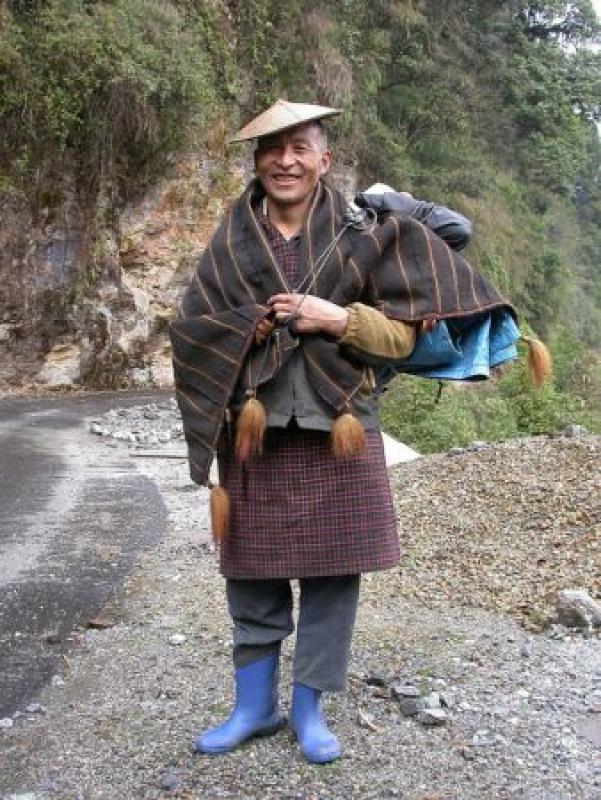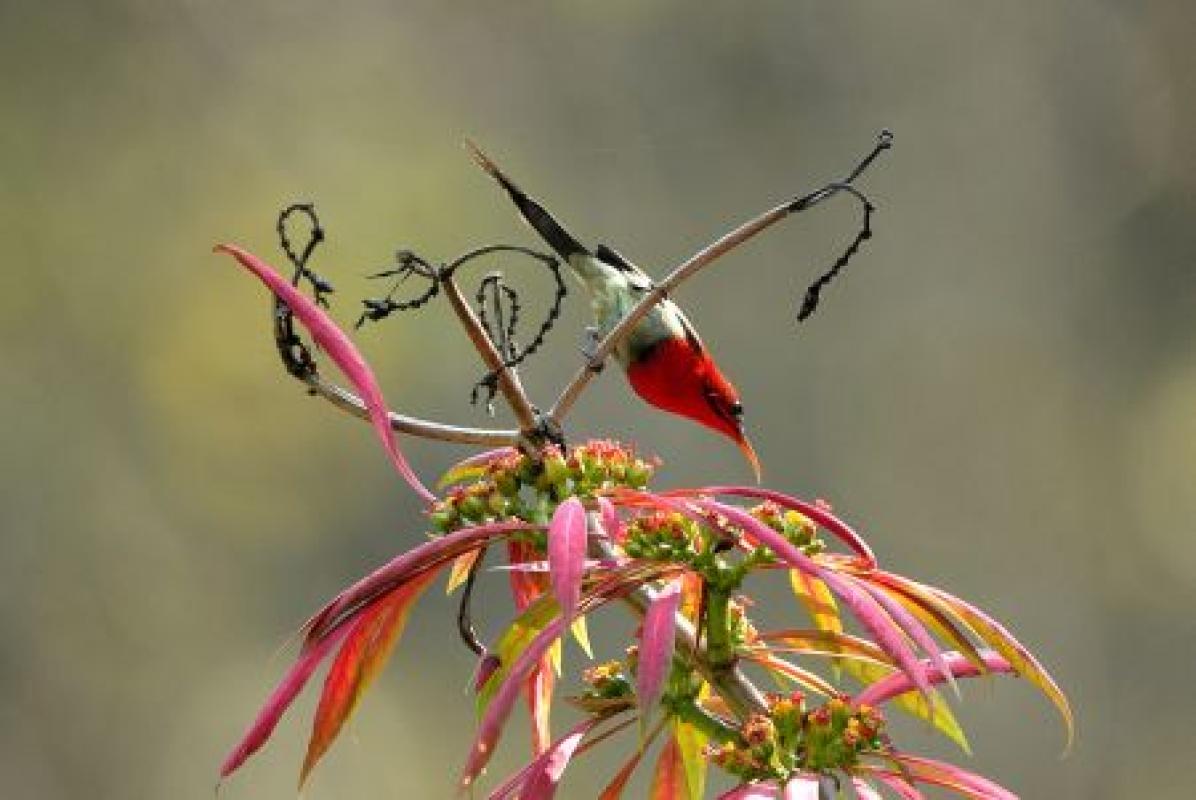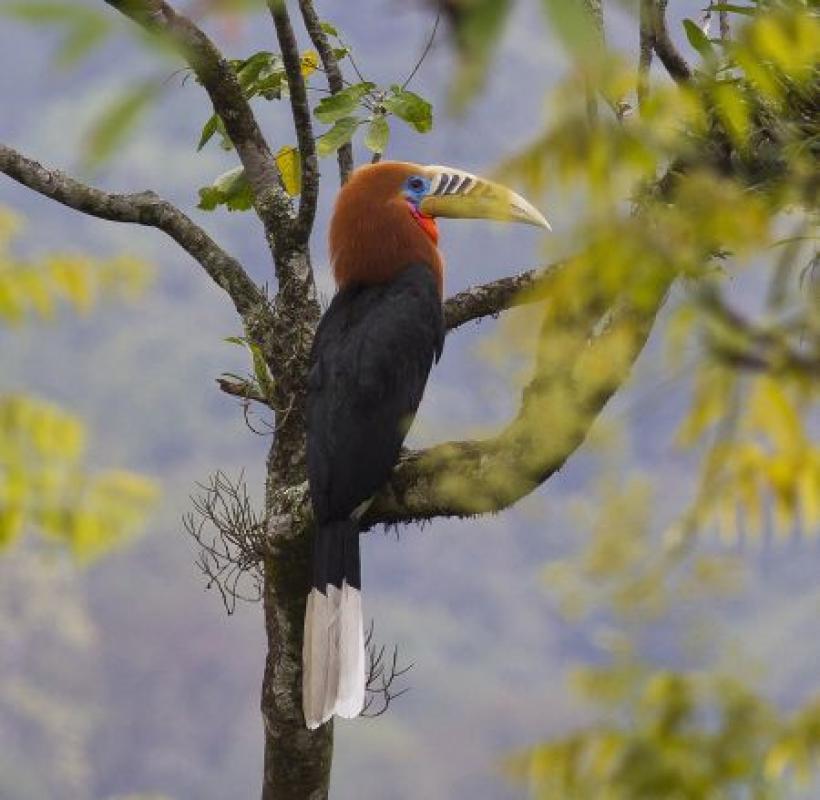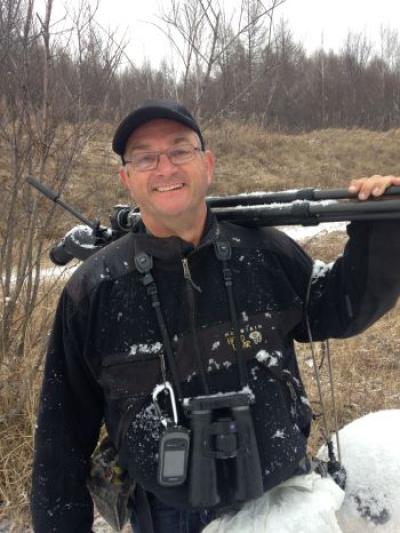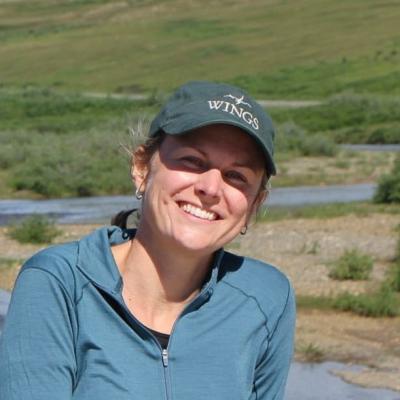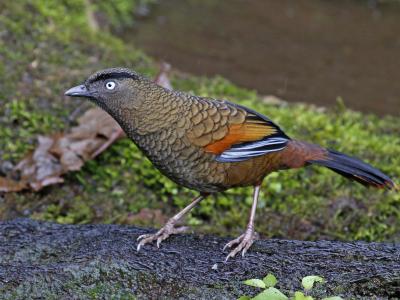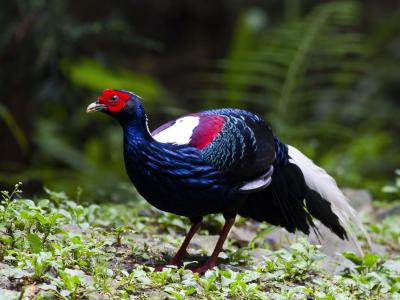Bhutan
-
Mar 26 to Apr 12 2025
Paul Holt
Druk Yul, or “Land of the Thunder Dragon,” is the remote Himalayan kingdom we know as Bhutan. Nestled deep in the heart for the Himalaya, wedged between two giant and populous neighbors, the country has retained much of its historic culture, its centuries-old rituals, and its fascinating heritage. Isolated by some of the highest mountain ranges on earth, Buddhist Bhutan is still poorly known in the West. Although most of it is now open to foreigners, tourist quotas are still restricted, and few travelers—and even fewer birdwatchers—have had first-hand experience of this unique and diverse country.
On this tour we’re sure to see birds in abundance, plus breath-taking scenery as we travel across almost the entire country. Over 70 percent of the land surface is forested, and over 600 species have so far been recorded in Bhutan so far; among them are more than 30 new species our tours have added to the country’s list, including Rusty-bellied Shortwing and Hodgson’s Bushchat. A significant number of species, including Satyr Tragopan, Blood Pheasant, Himalayan Monal, Yellow-throated Fulvetta, Fire-tailed Myzornis, Sikkim Wedge-billed Babbler, and Long-billed and Bar-winged Wren-Babblers, are easier to see here than anywhere else on earth. And Bhutan is one of very few accessible places to see several others, such as Ward’s Trogon, Yellow-vented Warbler, Blue-fronted Robin, and White-naped Yuhina.
Even more, perhaps, than other countries, fabulous Bhutan fires the enthusiasm of all who have visited it, leaving them with a sense of privilege and a longing to return.
Day 1: The tour begins this evening in Delhi. Upon arrival at Indira Ghandi International Airport you will be transferred to a nearby hotel. Night in Delhi.
Paul is not only an amazing birder but he is well organized, extremely knowledgeable and fun to be with. We chose the Bhutan tour in order to be in the field with him again. We want as well to mention our stellar ground crew who were excellent! They looked after us in every way they could, providing hot drinks, meals and other comforts every day and taking care of us astoundingly well when we were camping. They deserve the highest kudos for all they did, everyday.Erin in the WINGS office was marvelous! She graciously and ably helped us with our many pre-tour personal trip extras which were complicated and required multiple communications, reservations and follow-ups. Everything turned out perfectly. - Randy and Sid B.
Day 2: We’ll catch a very early morning flight to Paro, Bhutan’s only international airport. Our route parallels the mighty Himalayan mountain chain, and if the weather is good we should see Mount Everest. After clearing immigration we’ll drive east through an enchanting valley with gaily decorated shingle-roofed houses and a willow-fringed river. Red-billed Choughs are quite common in this valley, and as we head east we’ll stop to search for regional specialties such as Black-tailed Crake, Ibisbill, Wallcreeper, Brown Dipper and Rufous-fronted Bushtit. We’ll spend the night in Thimpu, Bhutan’s delightful capital.
Day 3: We’ll head east out of Thimpu and up onto the western slopes of the Dochu La, the first of a series of high-altitude road passes that we’ll explore. Entering the pristine mixed forests of hemlock, fir, oak, magnolias, and rhododendrons, we should see a wealth of birds, including some species-rich feeding flocks. Quarrelsome Nutcrackers are common, and past highlights have included skulking Hill Partridge, Satyr Tragopan, Golden Bush Robin, the immaculate Himalayan Cutia, Brown Parrotbill, and even the gorgeous Fire-tailed Myzornis. Most of our birding on this tour is from the roads, which are well paved and almost lacking in traffic. Today, however, we’ll venture offroad onto a trail that enables us to explore the forest more thoroughly. On several recent tours we’ve even managed to have excellent views of Ward’s Trogon, one of Bhutan’s premier avian prizes. We’ll spend the following two nights near Punakha.
Day 4: From our base at a splendid, traditionally decorated hotel near Punakha, the former capital of Bhutan, we’ll explore the braided channels of the Mo Chhu River and its bird-rich subtropical forests. Our route will take us past the spectacular Punakha Dzong. We should see an impressive array of species here, and on several occasions in the past these have included a White-bellied Heron, one of Bhutan’s rarest birds. We’re sure to encounter several parties of brightly colored minivets and noisy Striated Laughingthrushes, and we may also see more Ibisbills. A whole host of forest species, such as Bay Woodpecker, Red-headed Trogon, and Wedge-tailed Green Pigeon, waits to be discovered. Fire-capped Tit breeds here, as do White-gorgeted Flycatcher and the rare Yellow-vented Warbler. We’ll also search for a variety of skulkers, including Lesser Shortwing, Spotted Elachura and Pygmy Cupwing, and two of Bhutan’s three species of tesia. In the afternoon we hope to be able to go inside Punakha Dzong, a fabulous fortified monastery that’s still home to many hundred monks. Night again near Punakha.
Day 5: Continuing east, past the smaller Wangdi Dzong, we’ll make a series of brief stops to scan the braided river channel. In the past we’ve seen Pallas’s Gull and Pallas’s Fish Eagle here and have added a number of other species to the Bhutanese list. We’ll also check forest edges and explore some of the small patches of cultivation. We’ll enter productive forest near the end of our journey, where we’ll stop to look for species such as Spotted Laughingthrush, Hume’s Bush-Warbler, Rusty-flanked Treecreeper, White-browed Bush Robin, and White-winged Grosbeak. Night in Gangtey, in the heart of the Phobjika Valley.
Day 6: Leaving Gangtey we’ll follow the twisting road up over the Pele La pass and into Central Bhutan. We’ll spend much of the morning on the Pele La Pass searching for species such as Blood Pheasant, Satyr Tragopan, and the majestic Himalayan Monal. We’ll search a stand of ringal bamboo on the eastern side of the pass for specialties such as Great and Brown Parrotbills and Golden-breasted Fulvetta, surely one of the world’s most attractive passerines. Night in Trongsa.
Day 7: From Trongsa we’ll head south down the Zhemgang road to a small guest house in Tingtibi where we’ll spend the following two nights. Our main focus at the start of our journey will be the rare and little-known Yellow-rumped Honeyguide, but we should also see a number of other birds, perhaps including Little Forktail, Large Niltava, or Russet Bush Warbler. The entire length of the spectacularly forested valley is also good for the endangered Golden Langur monkey. Night in Tingtibi.
Day 8: We’ve seen Beautiful Nuthatch at several sites on the lower Zhemgang road, and we’ll spend time searching for this magnificent creature. Our guest house right in the heart of superb forest, is at one of the lowest altitudes that we visit; species encountered here on recent tours include Chestnut-breasted Partridge, Violet Cuckoo, Pin-tailed Green Pigeon, Rufous-necked Hornbill, Pale-headed Woodpecker, Pale-billed Parrotbill and Himalayan Cutia. Rufous-faced Warbler is also quite common, and we stand a reasonable chance of encountering the rare White-bellied Heron and possibly even a Collared Treepie. Night again in Tingtibi.
Day 9: This will be our longest driving day of the tour, taking us from Tingtibi north back through Trongsa before continuing east up and over the bamboo-thronged Yotong La into the first of the four Bumthang valleys. There, the scenery changes to broad grassy valleys and rolling hillsides covered in spruce and fir, and the avifauna changes equally abruptly. Night in Jakar.
Day 10: We’ll start early today, continuing our circuit east and searching for pheasants, which could include Himalayan Monal, Satyr Tragopan, and Blood Pheasant. Eventually we’ll cross the Thrumsing La, at 12,465 feet Bhutan’s highest road pass. The road then plunges dramatically down into rich semi-tropical rainforest, taking us onto the Lingmethang road, perhaps Asia’s premier birding road. Many of the region’s real specialties and most sought-after species: Slender-billed Scimitar Babbler, White-browed and Rufous-breasted Bush Robins, Dark-rumped Rosefinch, and Fulvous, Brown, and Great Parrotbills can be found here, as can Chestnut-breasted Partridge, Ward’s Trogon, the majestic Rufous-necked Hornbill, Blue-naped Pitta, Blue-fronted Robin, and Sikkim Wedge-billed, Long-billed, and Bar-winged Wren-Babblers. We’ll spend parts of five days on the magical Lingmethang road – our first night will be at higher elevation near Sengor, the other three significantly lower down. Accommodation at Sengor is still rather spartan, so we’ve opted to camp in modern, spacious walk-in tents equipped with comfortable camp beds; the tents will be set up for us by our Bhutanese crew.
Days 11-13: We’ll spend these days exploring the fabulously lush primary forests near Lingmethang in search of the area’s specialties. We’re sure to see many new birds, and while not all of them are rare, many, such as Slender-billed and Coral-billed Scimitar-Babblers, Scaly and Blue-winged Laughingthrushes, White-breasted Parrotbill, Broad-billed Warbler, White-naped Yuhina, and Rufous-throated Wren-babbler are poorly known and unfamiliar to most birders. Nights near Yongkola.
Day 14: We’ll leave Yongkola and continue east, by-passing Trashigang, and on to our second camp site of the tour – one close to lush, bird-rich forests near the Karung Pass.
Day 15: Leaving our final camp site we’ll continue south to our next base in southeastern Bhutan. Our journey takes us through numerous small villages, across several forest-covered passes, and down spectacular river valleys. Only recently re-opened to foreigners, this area of eastern Bhutan remains ornithologically poorly known. As so often on this tour we’ll take breakfast and lunch in the field, and make several exploratory birding stops amid superb forest before reaching Samdrup Jongkhar, a bustling border town lying at the junction of the Himalayas and the Brahmaputra flood plain. We’ll spend two nights here.
Day 16: Spending the entire day at low elevation never very far from the Indian border Today’s key species will include Grey Peacock Pheasant, Wreathed Hornbill, Whistling Hawk-Cuckoo, Mountain Imperial and Pin-tailed Green and Mountain Imperial Pigeons, Violet Cuckoo, Dark-rumped Swift, Long-tailed Broadbill, Rufous-necked Laughingthrush, Sultan Tit, and we stand another chance of encountering the enigmatic Beautiful Nuthatch. Night again in Samdrup Jongkhar.
Day 17: We’ll spend the early morning exploring another site near Samdrup Jongkhar,. We’ll reluctantly leave Bhutan for the drive south to Assam, India, and on to Guwahati, the logistical hub of northeastern India. We’ll make several brief stops along the way; we’re sure to see many Lesser Adjutants and hopefully also quite a few Greater Adjutants. Night in Guwahati.
Day 18: We’ll have an hour or two birding around Guwahati this morning. Highlights could include Small Pratincole, Blue-tailed Bee-eater, Citrine Wagtail, Rusty-rumped Warbler, and Striated Grassbird. Next we’ll catch our flight back to Delhi and transfer to an airport hotel to freshen up. After a leisurely dinner we’ll transfer to the international airport where the tour ends in time for late evening departures home.
Note: The information presented below has been extracted from our formal General Information for this tour. It covers topics we feel potential registrants may wish to consider before booking space. The complete General Information for this tour will be sent to all tour registrants and of course supplemental information, if needed, is available from the WINGS office.
ENTERING INDIA: All U.S. citizens need a passport, valid at the date of entry and with at least one blank page for a visa, and valid multiple entry Indian visa to enter and exit India. Note that you must not apply for an online e-visa for this tour as we re-enter India at the end of the trip by driving across the border. (E-visas are permissible if entering via an air or sea port.)
For the most current information on entry and exit requirements, please contact the Embassy of India in Washington, DC or call (202) 939-9865 or the Indian Consulates in Chicago, New York, San Francisco, Atlanta, or Houston. Outside the United States, inquiries should be made at the nearest Indian embassy or consulate.
Evidence of a Yellow Fever vaccination must be shown only if you are arriving within six days after leaving or transiting endemic areas.
ENTERING BHUTAN: The Kingdom of Bhutan requires a passport valid for a minimum of six months beyond the intended date of departure from Bhutan and a tourist visa to enter Bhutan. Our Bhutanese agent will apply for a visa on your behalf and it will be issued on our arrival at Paro international airport. The cost of the Bhutan visa is included in the tour price.
COUNTRY INFORMATION: You can review the U.S. Department of State Country Specific Travel Information for India at https://travel.state.gov/content/travel/en/international-travel/International-Travel-Country-Information-Pages/India.html, and for Bhutan at https://travel.state.gov/content/travel/en/international-travel/International-Travel-Country-Information-Pages/Bhutan.html.
PACE OF TOUR: We’ll experience a series of lengthy days and frequent hotel changes, and the tour can be tiring. In several places the best areas of forest will be some distance away from our hotels, and we’ll need to leave our hotels as early as 4:00 or 5:00 am.
We’ll have breakfast in the field most days, and our ground crew will go ahead of us and set up their cooking equipment. We’ll often bird watch before joining the crew for breakfast. Tables, chairs, plates and cutlery, etc., are all provided for these excellent and enjoyable meals. We’ll usually have lunch in the field, and once again the crew will normally go ahead of us and set up the tables and chairs at a suitably scenic spot.
Most of the birdwatching will be from the road. Away from Paro, the capital, Thimpu, and Punakha, the winter capital, there is relatively little traffic, and in any case, the forests are often so dense that it would be impractical to try venturing into them.
There will probably only be a couple of occasions where we’ll venture onto forest trails - one of these trails is fairly steep and our walk on it typically covers for about one and a half miles. Our coach will drop us at the start of the trail and drive around to re-join us at the bottom. The second forest trail is also about one-and-a-half miles and is again downhill all the way with the coach again waiting for us at the bottom. The leader will explain more about these trails and the other day’s events during the course of the tour.
We spend one night at most of our hotels, thus moving on most days. We’ll remain out all day and aim to arrive at our next hotel in the late afternoon/early evening. On many days there will be a break of an hour before dinner. We’ll compile a checklist of the birds we’ve seen just before or just after dinner and then retire early to bed (especially when we’re making an early start the next day).
As much of the tour is at medium temperatures, bird activity continues throughout the day and conditions remain pleasant, so we won’t schedule long mid-day breaks. If anyone wishes to have a longer break during the day, the bus is available. Our bus will be with us throughout the tour, and anyone taking a break can re-join the group when they wish. As we’re moving on most days, it’s rarely possible to take an entire day off unless you’re willing to rest in the bus.
We anticipate having at least two vehicles with us throughout the tour - one for us and at least one for our Bhutanese ground crew. In this situation, we have more flexibility and can sometimes offer the option of an early arrival at our hotel. On a couple of days there will be some optional pre-breakfast birdwatching. There will also be a couple of occasions where we’ll take an optional after dinner owl walk.
HEALTH: The Centers for Disease Control and Prevention (CDC) recommends that all travelers be up to date on routine vaccinations. These include measles-mumps-rubella (MMR) vaccine, diphtheria-tetanus-pertussis vaccine, varicella (chickenpox) vaccine, polio vaccine, and your yearly flu shot.
They further recommend that most travelers have protection against Hepatitis A and Typhoid. The Typhoid vaccination is particularly important because of the presence of S. typhi strains resistant to multiple antibiotics in this region.
Please contact your doctor well in advance of your tour’s departure as some medications must be initiated weeks before the period of possible exposure.
The most current information about travelers’ health recommendations can be found on the CDC’s Travel Health website at https://wwwnc.cdc.gov/travel
Malaria: Malaria occurs in some of the areas we’ll visit but the CDC considers the risk to be very low. Please consult your travel health professional. Please note that Chloroquine is not an effective antimalarial drug in the Indian Subcontinent and should not be taken to prevent malaria in this region.
Elevation: On the second day of the tour we will fly from Delhi into Paro airport (2280 metres or about 7400 feet). From there we’ll drive to Thimpu, which at 2310 metres (approx. 7550 feet) is only marginally higher. After that we will drive up to the summit of the Dochu La (3112 metres or about 10,050 feet), one of Bhutan’s five major roads passes. We’ll spend a short while at this altitude and, as throughout the tour, we will try to avoid walking up hill and will move at a slow pace so as to avoid altitudinal headaches and breathlessness. Our next two nights will be spent near Punakha (1435 metres, 4,500 feet), and the intervening day’s activities will be at or near this altitude.
From Punakha we’ll move on spending the night at Gangtey in the Phobjika Valley. At 3120 metres (or about 10,800 feet) this will be our highest overnight stay. From Gangtey we will continue east crossing a couple of fairly high road passes - the Pele La at 3300 metres (11,132 feet) and eventually the Thrumsing La (Bhutan’s highest road pass) at about 3500 metres (12,200 feet). We will not spend much time bird watching at the latter and will keep physical exertions at these altitudes to a minimum.
In any case, we will do virtually all our bird watching from the road, usually walking downhill, and our vehicle will always be close at hand so that anyone wishing to take a longer break can easily do so.
Miscellaneous: Biting insects are not numerous, but biting Black Flies do occur locally: insect repellent will provide some protection against them. We recommend using insect repellents with a high concentration of DEET. Care must be taken, however, to avoid getting the DEET repellent on optical equipment as DEET dissolves rubber and plastic and can damage coated lenses.
Tap water is not safe to drink, but bottled water, soft drinks and beer are widely available. Bottled water is provided in our tour vehicles during the day.
On some of the lowland trails, particularly the ones down the Zhemgang road, we may encounter a few small terrestrial leeches. These are well known to travellers in Southeast Asia and are not harmful. They are found on the forest floor, are typically quite scarce at this time of year but can be more common after it has rained. The best way to prevent these leeches from getting onto your ankles is to spray your boots with insect repellent.
Intestinal disorders are not uncommon in both India and Bhutan. We suggest bringing anti-diarrhoea medicine such as Imodium. Gatorade or other electrolyte-replacement drinks in powder form are also worth bringing as they replace the vital salts and minerals lost during a bout of diarrhea.
Smoking: Smoking and vaping is prohibited in the vehicles or when the group is gathered for meals, checklists, etc. If you are sharing a room with a nonsmoker, please do not smoke in the room. If you smoke in the field, do so well away and downwind from the group. If any location where the group is gathered has a stricter policy than the WINGS policy, that stricter policy will prevail.
Note: Smoking and vaping became illegal in Bhutan in early 2005. After that date cigarettes could not be bought in or brought in to Bhutan but the law was relaxed slightly in 2011. Visitors can now bring 200 cigarettes in to Bhutan providing that they are for their own use only. This law is enforced in all public places and applies to both foreign tourists and Bhutanese citizens; smoking cigarettes is considered a serious offense in Bhutan with penalties including a modest fine and between three and five year in jail!
CLIMATE: Delhi will be very hot, with mid-day temperatures in mid-late April perhaps approaching 40°C (104°F). Lowland Bhutan, i.e. the areas south of Zhemgang will also be warm, perhaps 30-32°C (86-90°F) if the weather is clear.
It will be noticeably cooler for the bulk of our trip. Temperatures on the higher passes may drop to just below freezing, and there may be a few patches of snow or ice lingering in shaded roadside gullies. It is unlikely to snow during the tour. Rainfall is possible anywhere and is perhaps more likely around Paro, Thimpu and Punakha in western Bhutan.
Note: Temperatures in mountainous regions such as Bhutan can vary enormously from year to year and often dramatically throughout the day and could range from 0-32°C (32-90°F).
ACCOMMODATION: During most of the tour we’ll be staying in moderate or good quality accommodation. Our hotels or guesthouses will always be among the best that are available, and although the rooms will always be clean and fairly well maintained, it must be remembered that Bhutan is a developing country and that hotel facilities are below what we are used to in the West. You should also be aware that very few tourists visit sites away from western Bhutan and that the tourist infrastructure in the east is still in its infancy.
In Thimpu and near Punakha we’ll be staying in good quality hotels. All the rooms will have private bathrooms with showers, baths and a western toilet. There will be ample supplies of hot water and constant electricity. Once east of Punakha the number of foreign tourists drops off dramatically, and the standard of the accommodation drops slightly. At Gangtey we’ll stay in a fairly new guesthouse in the Phobjika Valley, about a twenty-minute drive from the spectacular Gangtey Gompa. The Phobjika Valley is connected to the main electricity grid, but there are occasional power cuts here. While our guest-house has its own generator, it usually takes the staff a few minutes to get this up-and-running in the event of a power cut. Each room has a private bathroom with a Western toilet and a shower. At both Trongsa and later in Jakar we will again stay in clean, reasonably equipped, family run guest houses and both are the best accommodation that is available. Both have private bathroom facilities with showers and western toilets. We will spend two nights in a local guest house in Tingtibi, south of Zhemgang in central Bhutan. The guest house here is rather simple but clean and, while all the rooms have en suite bathrooms, these only have hole in the floor continental style toilets. The supply of hot water for showering is limited and instead the staff will provide us with buckets of hot water in our rooms. A new guesthouse has been built recently at Yongkola and we will stay there for three nights and will spend two nights at a similar standard of guest house in Samdrup Jongkhar.
Camping: Partly because the accommodation in eastern Bhutan is basic, and partly in order to avoid long drives and to be near the best bird watching in active morning hours, we’ll camp at two sites. We’ll spend a total of just two nights under canvas - one at Sengor about one-third of the way down the Limithang road, and another at a site near the Karung Pass south of Trashigang. When camping, we will use modern, two-man tents. These are spacious, decent quality walk-in tents, each with sown-in ground-sheets, a fly-sheet and a door at either end. They measure about 10’ long and 8’ wide and are about 7’ high down the central ridge. Our ground agents will erect the tents for us. Each double tent will be provided with two comfortable camp beds, each with a mattress and a couple of thick blankets or quilts. Single tents are almost exactly the same except that only one bed will be provided. One, or usually two, latrine tents are also provided. We will have a separate ‘mess tent’ complete with tables and chairs for our meals. All of our camps will also have an enclosed ‘shower tent’ that is approximately 7’ tall and 4’ square. Our camp staff will provide large buckets of hot water and a ladle for showering. This ‘shower tent’ might not be available for our one night at Sengor (we’ve found that it’s a little too cold there for most people to be interested in having a shower) and instead bowls of hot water for washing will be provided.
People who are sharing rooms will also share a tent - there is plenty of space and those who have requested single rooms will have a tent to themselves.
We are unable to guarantee single rooms at all our hotels, but if you have requested a single room and you do have to share occasionally, we will refund the appropriate single room supplement for those nights.
Internet: The hotel that we use (briefly) in Delhi at the start and end of the tour has free wireless internet. Most of the hotels on the tour loop offer wireless internet access and these include the ones in Punakha, Trongsa, Jakar (Bumthang), Tingtibi, Gelephu and Guwahati. Note however that the service in many of these places is occasionally, perhaps even frequently, not working and that even when it is up and running connection speeds are usually significantly slower than what many of us a used to at home.
FOOD: The food on the tour will for the most part be very good. We’ll have a few hotel breakfasts but most of them will be cooked in the field by our ground staff. The breakfasts that our ground crew provide when we are camping are amazing and usually the tastiest of the entire tour; porridge or cornflakes, followed by either scrambled, fried or poached eggs or omelettes, often with baked beans or sausages. There are also ample supplies of toast and jam and tea and coffee. As always in Bhutan, the quantities of food provided will be vast.
Lunches will usually be eaten in the field and will frequently be a meal cooked for us on site. These are often lighter than our breakfast with a wide variety of soups, biscuits, bread and cheeses being offered over the course of the tour.
All evening meals will be in our hotels (usually hot buffets) except when camping, where our camp staff will cook for us. Up to ten different dishes have been provided at dinner, and there’s always more than enough!
Food Allergies/Requirements: We cannot guarantee that all food allergies can be accommodated at every destination. Participants with significant food allergies or special dietary requirements should bring appropriate foods with them for those times when their needs cannot be met. Announced meal times are always approximate depending on how the day unfolds. Participants who need to eat according to a fixed schedule should bring supplemental food. Please contact the WINGS office if you have any questions.
Drinks: Bottled water and/or a soft drink or a beer is provided at lunch and dinner, as is coffee or tea. Bottled water is provided in our coach for daytime use. All other drinks or ‘personal’ drinking water for use in your room at night are the responsibility of the individual.
TRANSPORTATION: Transportation between sites is by coach in both Delhi and in Bhutan. The leader will arrange a seating rotation. Participants should be able to ride in any seat in tour vehicles.
Our internal flights from Delhi to Paro are with Druk Air, Bhutan’s national airline, while our flight back to Delhi from Guwahati in Assam is with a good quality Indian airline. Both of these carriers’ planes are very modern, and their safety record is excellent.
2024 Narrative
This year there was absolutely no doubt which of our Blood Pheasant encounters contributed to that species romping home as the winner of the end of tour Bird of the Trip poll. It was our second - the covey of four (three males and one female) which came ludicrously close and made lots of noise as they ran around and around and around us eager to perform. We were on the lower western slopes of the Thrumsing La and already more than half-way through the tour. Piping Satyr Tragopan, an equally resplendent species that we saw on three separate days, by a hefty eight points and even the ever popular, aptly named, Beautiful Nuthatch by a remarkable 25, the size of the win was almost as staggering as the encounter itself!
We’d encountered a huge number of other fabulously memorable species with other highlights in the Top 10 including some of the eastern Himalayas’ most sought after species: Himalayan Monal, White-bellied Heron, Ibisbill, Rufous-necked Hornbill, Fire-tailed Myzornis and Pallas’s Fish Eagle.
But there’s far, far more to any bird tour than the star birds and, as always, our Bhutan tour is simply brimming over with memorable moments and stupendous encounters. The tour got off to a superb start with a fabulous, panoramic flight along the southern edge of the Himalayan Mountain chain with spectacular mountain views blessing much of the journey. Once in Paro we met Kipchu, our superbly knowledgeable guide, Sangay, our equally skilled driver, and another Sangay our second guide and then we were off to explore this fabulously bird-rich Kingdom. Moments later we were watching our first, quality Bhutanese birds – the first of our four separate Ibisbills. That was promptly followed by a male Wallcreeper while a small roadside marsh right on the edge of Paro held a pair of inquisitive Black-tailed Crakes. Lunch back in Paro was a tasty introduction to Bhutanese cuisine. What a day – and what a welcome to The Land of the Thunder Dragon!
After a night that never seemed quite long enough, we were up and at ’em again early the following morning, with the Dochhu La, our first Bhutanese pass, beckoning. True to form it yielded a few, but far from all, of its ornithological jewels – the best of which, amidst the myriad yuhinas, fulvettas and minlas included a couple of Hoary-throated Barwings, our first Rusty-flanked and Sikkim Treecreepers, a brilliant Green Shrike Babbler, memorable looks at a pair of the fascinatingly-named Fire-tailed Myzornis, our first Red-headed Bullfinches, and a single co-operative a Himalayan Cuckoo and Scarlet Finch in the very same tree. Best of all though were the prolonged ‘scope view of a fantastic male Satyr Tragopan!
Spending the following two nights in a new hotel overlooking the river south of Punakha dzong gave us the opportunity to relax a little and look at a few of the region’s more common species. A covey of four Kalij Pheasants; our first Mountain Hawk, Rufous-bellied, Black and Steppe Eagles and our first Grey-sided Bush Warbler and Chestnut-headed Tesia. That afternoon, Kipchu took us on an insightful and thoroughly enjoyable guided tour inside the magnificent Punakha dzong. Even the most fanatical birders among us felt that our time had been well spent…
With spring migration in full flow, the rivers immediately around Punakha, once Bhutan’s winter capital, harboured decent numbers of waterfowl and we spent time looking at and searching through those the following day. The pair of Garganey, four Red-crested Pochard, and female Ferruginous Duck had to compete with one, and later two, Pallas’s Fish Eagles and a pair of Crested Kingfishers for our attention. We climbed higher, up and into the cloud later in the day and, after a spectacular performance from a Yellow-rumped Honeyguide and later a pair of Spotted Laughingthrushes, descended into the flat-bottomed Phobjika Valley. Unfortunately, no late-staying Black-necked Cranes lingered there this year.
Our second major pass, the Pele La, welcomed us the following morning. The day’s primary target, the always resplendent Himalayan Monal, gave itself up spectacularly well and, like an oversized, fluorescent Turkey, he had us transfixed. We were equally enthralled by a reluctant pair of Blood Pheasants while another gamebird, the ever-effervescent Satyr Tragopan, that eventually lolloped leisurely around our parked vehicle, took a bit more effort. We thought then that those might well be our last encounters with each of these species but how wrong we were! Although we’d only glimpse Himalayan Monal subsequently, we’d eventually finish the tour having had another, and truly spectacular Blood Pheasant encounter, and having encountered ten separate tragopans – three of which we actually saw! What’s more, everyone present saw Blood Pheasant, Himalayan Monal and Satyr Tragopan; everyone saw Beautiful Nuthatch, Rufous-necked Hornbill and White-bellied Heron. Virtually everyone saw ALL the best birds on the entire tour.
Heading from the Pele La, to Trongsa (where we revelled a pair of Bhutan Laughingthrushes) we overnighted there before continuing our journey south down the Zhemgang road. Here we revelled in views of a roadside Grey Nightjar, multiple Golden Langurs, and several Sultan Tits before making it to Tingtibi in the evening. Basing ourselves here for two nights we tried…and tried…and tried to find the area’s Beautiful Nuthatches but failed. That species would have to wait.
Our search for the extremely rare, White-bellied Heron was superbly successful, and we soon found one fishing in a nearby river. Even with our focus on the heron and nuthatch we still found time to add Red Junglefowl, Banded Bay Cuckoo, Pin-tailed Green Pigeon, four Great and even more Rufous-necked Hornbills, at least two pairs of Blue-bearded Bee-eaters and our first of many Himalayan Cutias.
Heading back north and then traversing east up and over the Yotong La our next destination was a comfortable guest house in Bumthang, replete with Red-billed Choughs in the garden and buck wheat pancakes in the restaurant!
Over the years we’ve found that the drive over Bhutan’s highest road pass, the mighty Thrumsing La between central and eastern Bhutan provides some excellent birding and 2024, with the stunning Blood Pheasant encounter mentioned earlier, was no exception. The following night’s introduction to Bhutanese camping went smoothly – everyone slept, the tents were sufficiently comfortable and spacious and, as if we ever doubted it, the camp crew hardworking and capable. It hardly mattered as, because of the itinerary change forced on us because of the closure of the land border to India that was our only night under canvas!
The Limithang road yielded another tragopan the following morning, but that one performed only for a lucky few. More cooperative however were the pair of Slender-billed Scimitar babblers, the Black-headed Shrike Babbler, Broad-billed Warbler and a fine male Sapphire Flycatcher. Two more full days based at Yongkola on the lower Lingmethang road yielded many more, but certainly not all, of our target species: a pair of Asian Emerald Cuckoos, both Rufous-throated and Long-billed Wren Babblers, White-gorgeted Flycatcher, Spot-winged Grosbeak, a flock of stunning Grey-sided Laughingthrushes, White-naped Yuhinas galore and for a lucky few, close range looks at a Black-crowned Scimitar Babbler. Best of all though were a confiding pair of Ward’s Trogon and a pair of Beautiful Nuthatches. We caught up with a good number of our remaining target species over the following few days. Highlights here included a hugely cooperative Slender-billed Scimitar-babbler; two Hill Partridges; all three species of tesia; Pygmy, Bar-winged, Rufous-throated and a fairly obliging pair of Long-billed Wren-babblers; a superb White-gorgeted Flycatcher; three brilliantly vociferous Sikkim Wedge-billed Babblers; several encounters with Himalayan Cutias, an and a Black-headed Shrike Babbler that came from over the horizon to sing in our faces…
But it wasn’t all straightforward – for the first time in over a decade we never even heard a Sikkim Wedge-billed Babbler and the ever-enchanting Black-throated Parrotbills and Golden-breasted Fulvettas kept their distance. Nevertheless, we’d had a great time on the Limithang road and, while we certainly hadn’t ‘cleaned up’, we headed back over the Thrumsing La more than satisfied by what we had experienced. Another morning on the edge of Trongsa produced the hoped-for Russet Bush Warbler, and fine looks at a Spotted Elachura, ‘no longer a wren babbler but still spotted’ that performed brilliantly for us all, and from the road, the following morning. All too soon we were back in Paro and shortly after that notching up almost 100 species at Sultanpur National Park on the outskirts of Delhi. Species that included a displaying pair of Sarus Cranes, two equally gargantuan Black-necked Storks, several Common Hawk Cuckoos, Sind Sparrows and umpteen shorebirds.
Our memories of Bhutan are sure to fade, but hopefully not too quickly and I’d hope that we’ll long remember our encounters with Blood Pheasant, Satyr Tragopan, Himalayan Monal, White-bellied Heron, Rufous-necked Hornbill and Beautiful Nuthatch to mention but a few. I wrote the following at the end of a previous Bhutan tour report ‘or perhaps the memories that will linger longest won’t be avian at all – perhaps our most savoured memories will be of the Bhutanese scenery, of hillsides cloaked in dense forest with magnificent snow-capped peaks as a backdrop, or of our crew’s magnificent efforts to keep us happy and entertained’.
The birding in Bhutan is awesome (really awesome!) and Paul’s in little doubt that this tiny kingdom hosts what’s some of the best birding on the planet, and after a tour like we’d just had, who could argue?
- Paul Holt
Paul is not only an amazing birder but he is well organized, extremely knowledgeable and fun to be with. We chose the Bhutan tour in order to be in the field with him again. We want as well to mention our stellar ground crew who were excellent! They looked after us in every way they could, providing hot drinks, meals and other comforts every day and taking care of us astoundingly well when we were camping. They deserve the highest kudos for all they did, everyday.Erin in the WINGS office was marvelous! She graciously and ably helped us with our many pre-tour personal trip extras which were complicated and required multiple communications, reservations and follow-ups. Everything turned out perfectly.
- Randy and Sid B. on Bhutan
Tour price includes Bhutan’s goverment SDF and visa fee; multiple entry visa application / fee for India NOT included.
Maximum group size 10 with one WINGS leader.
